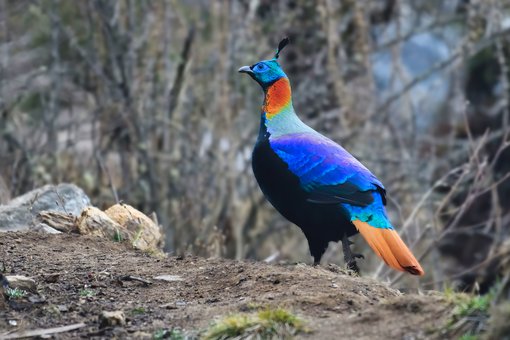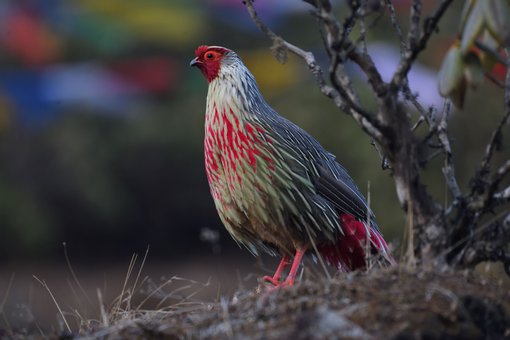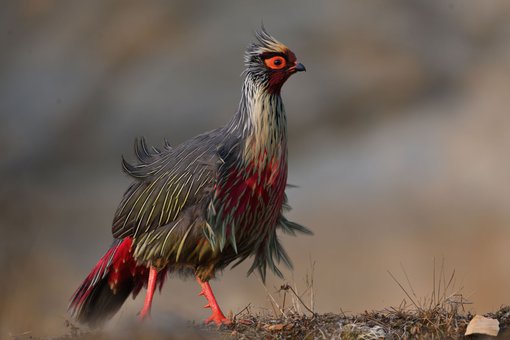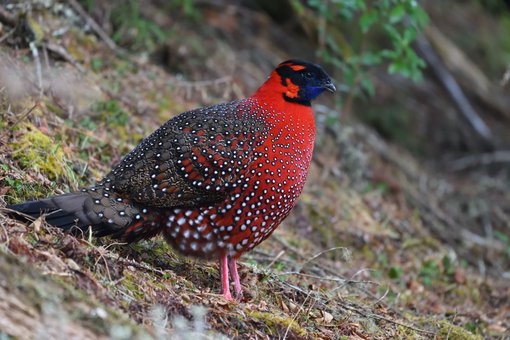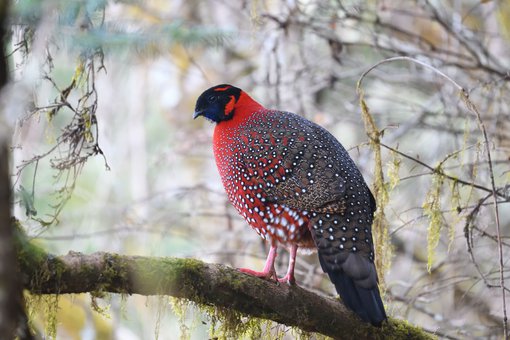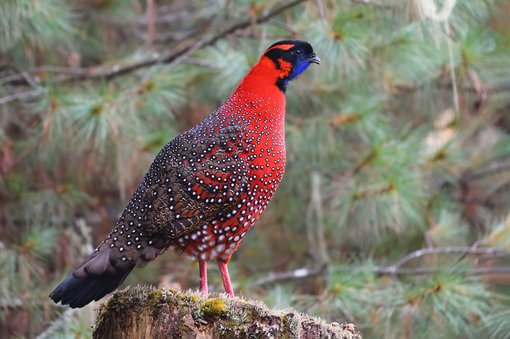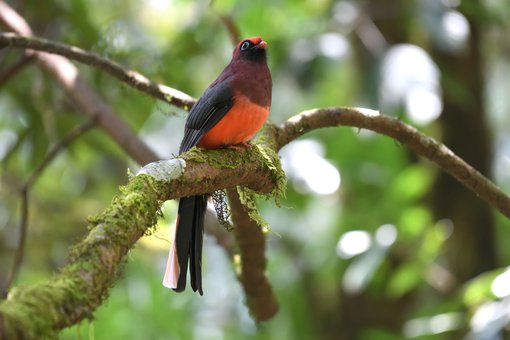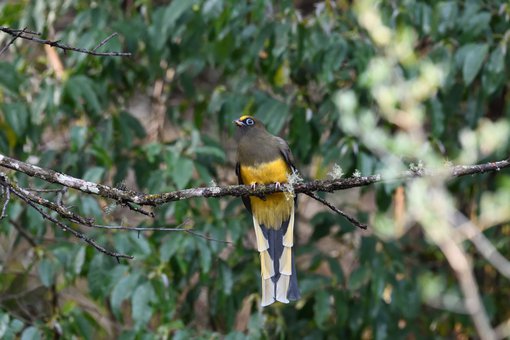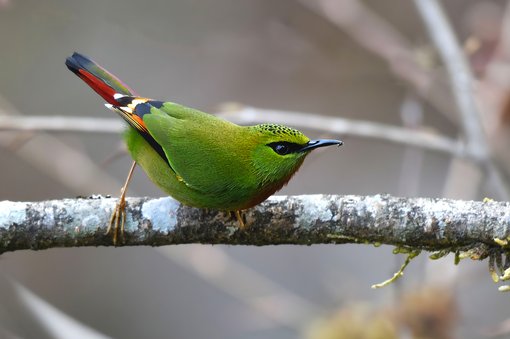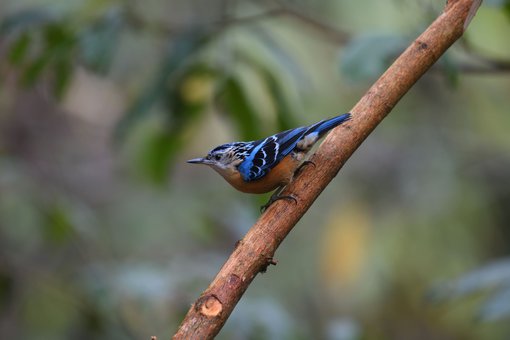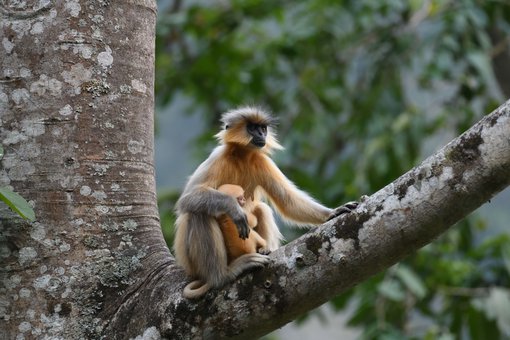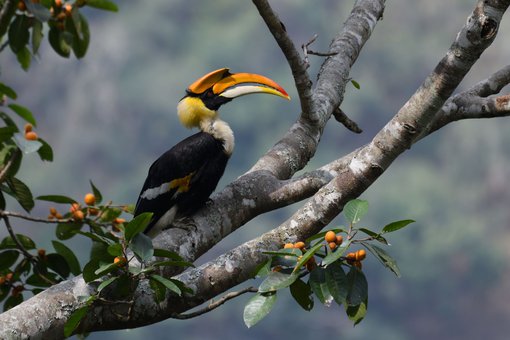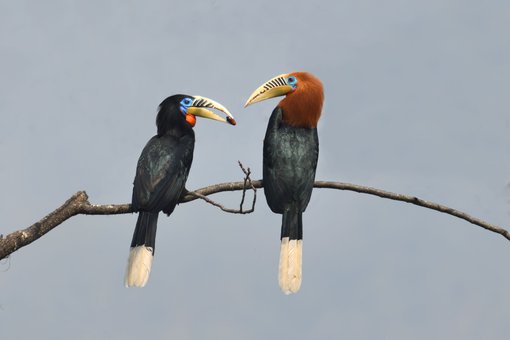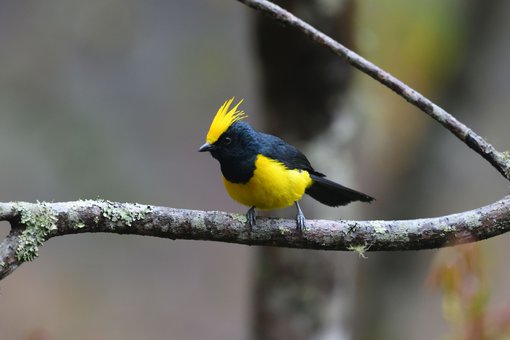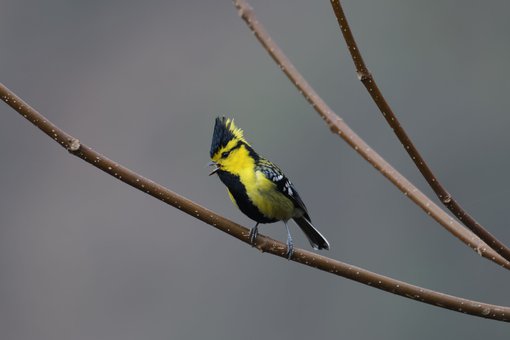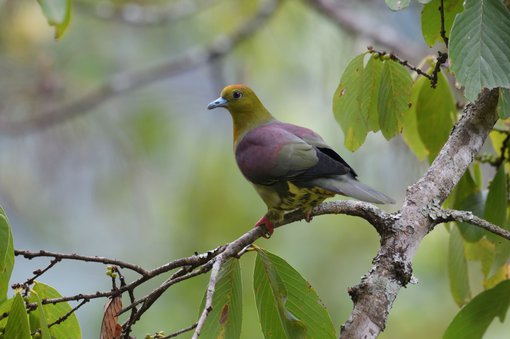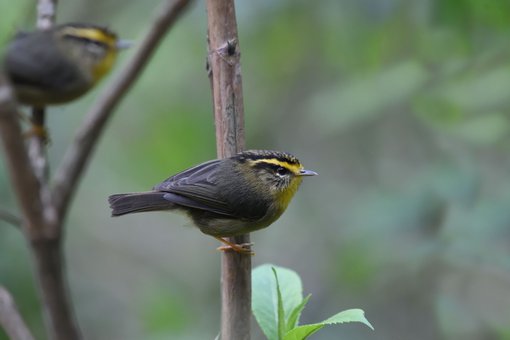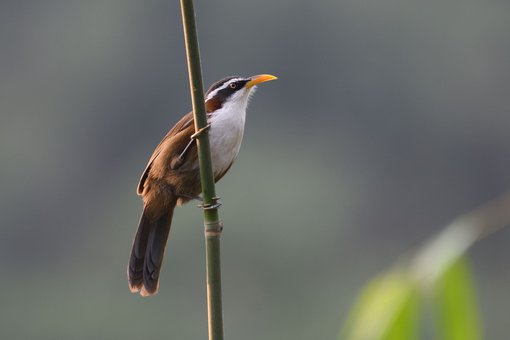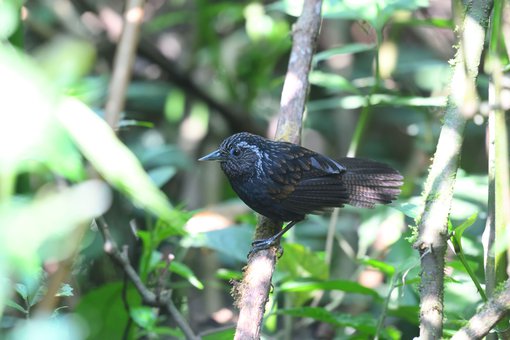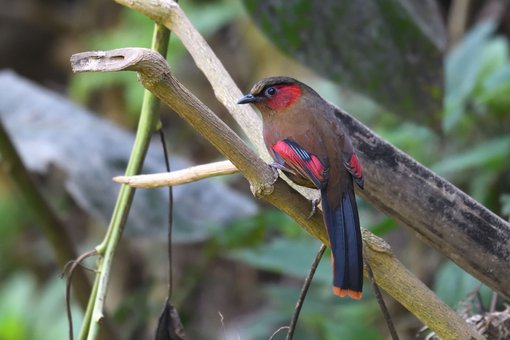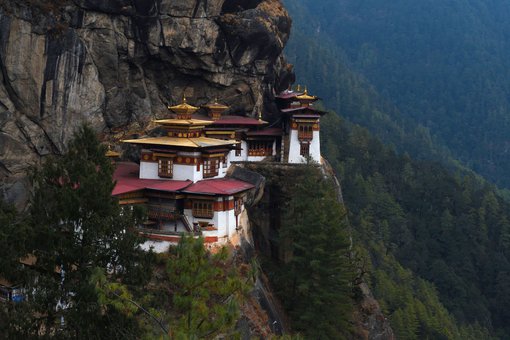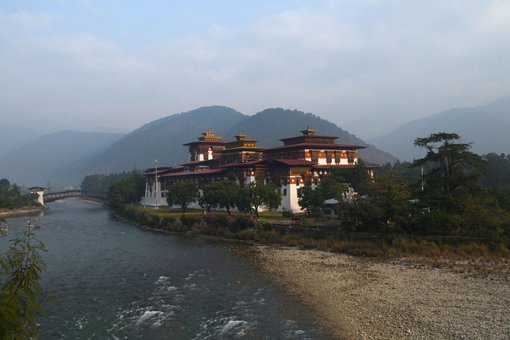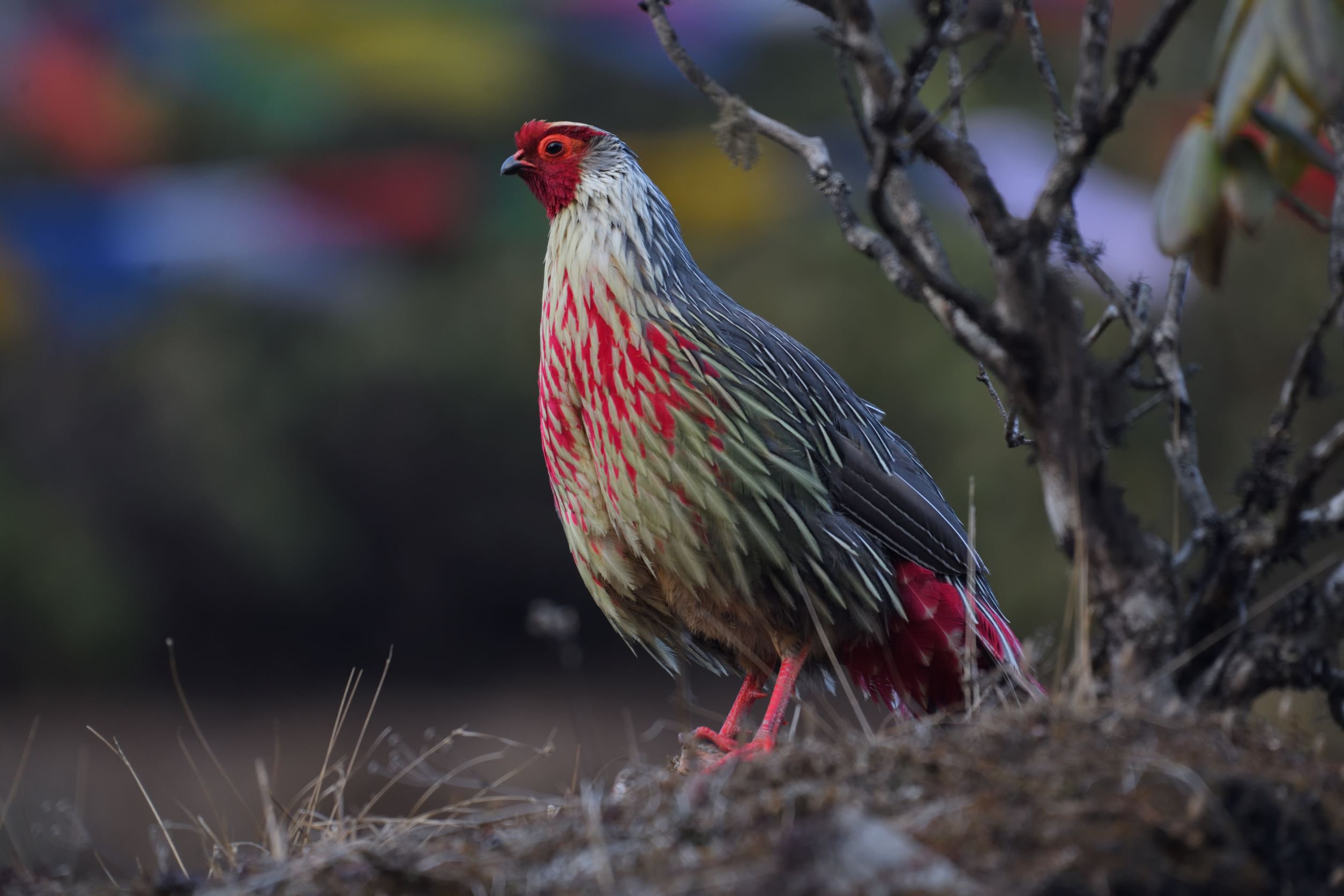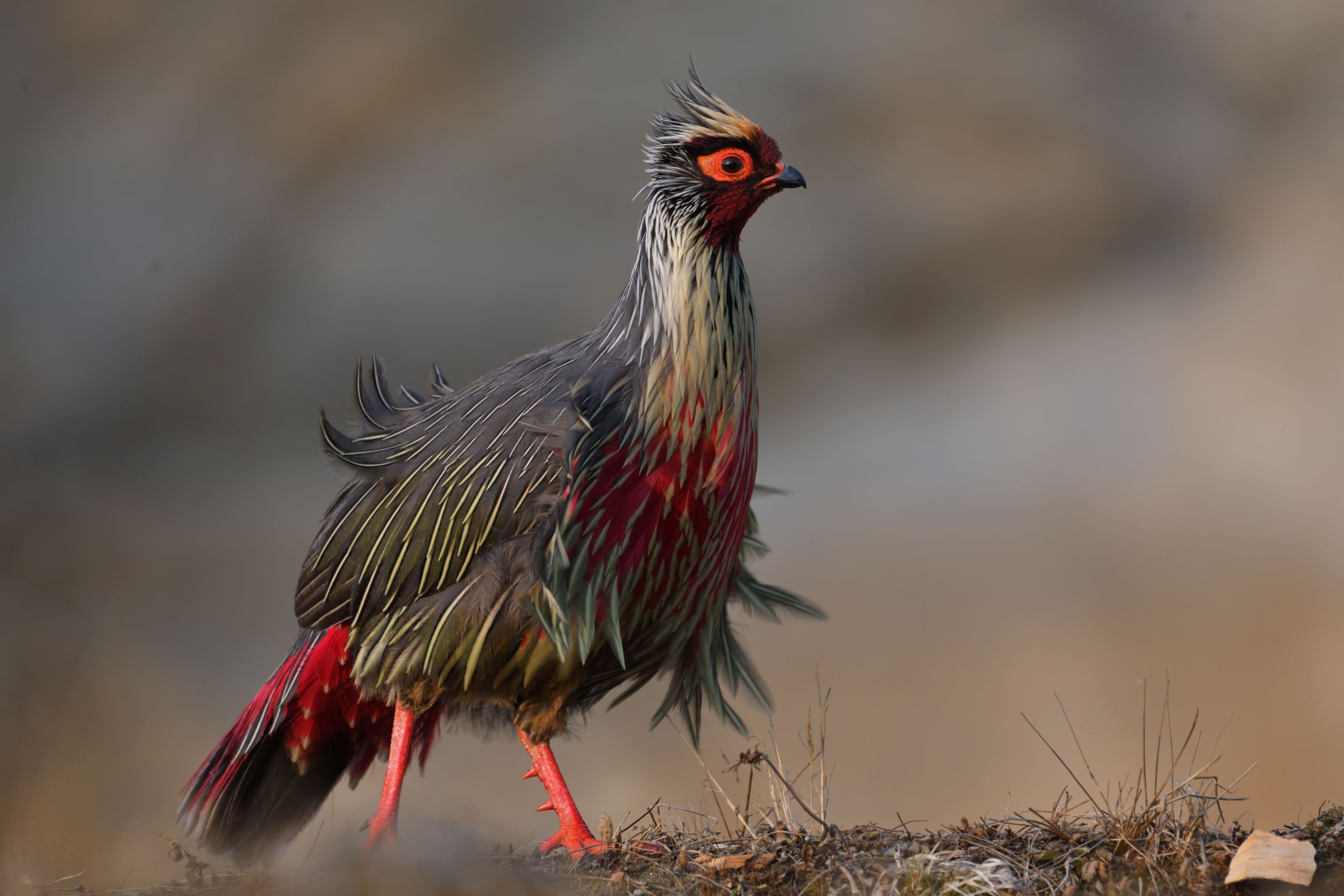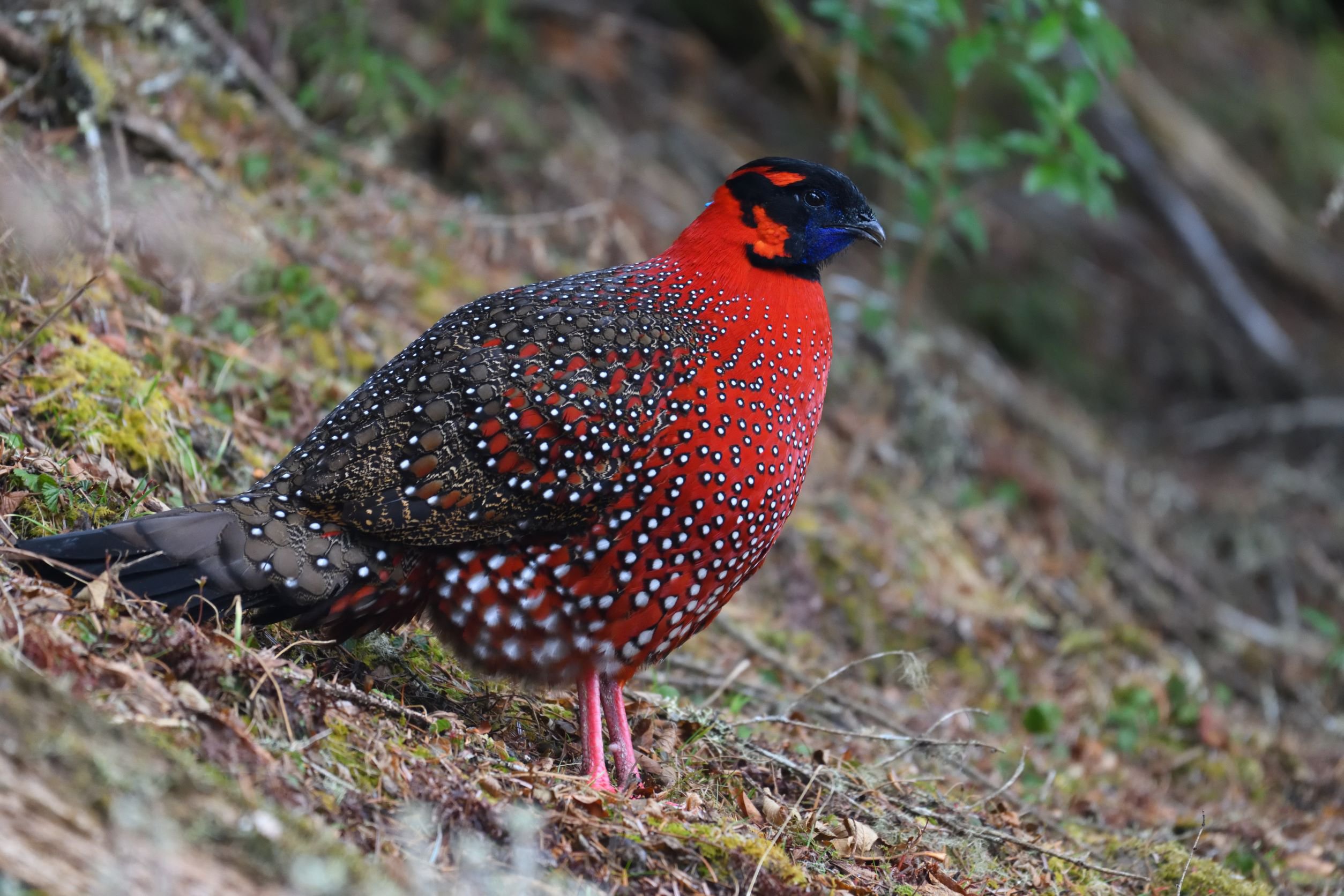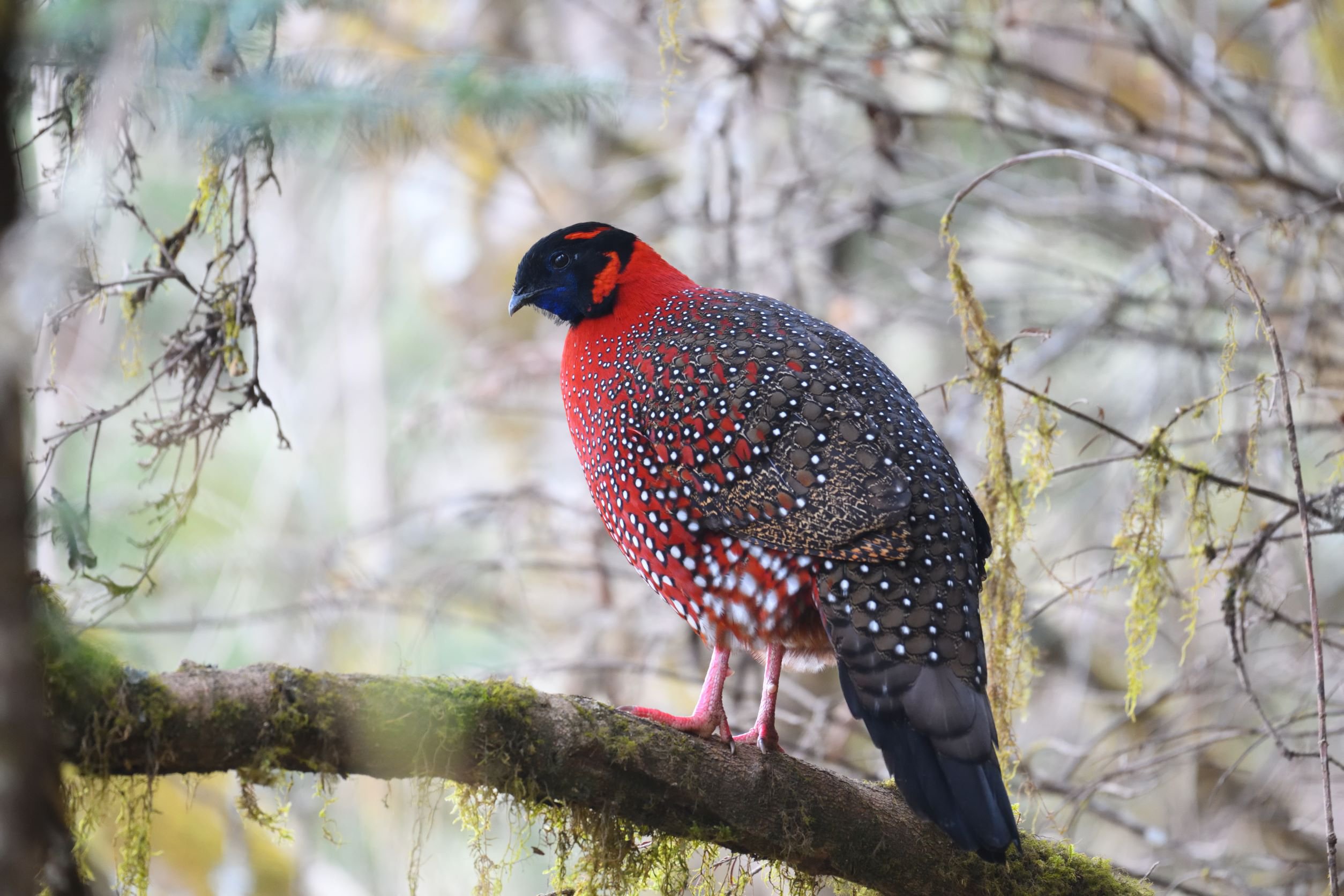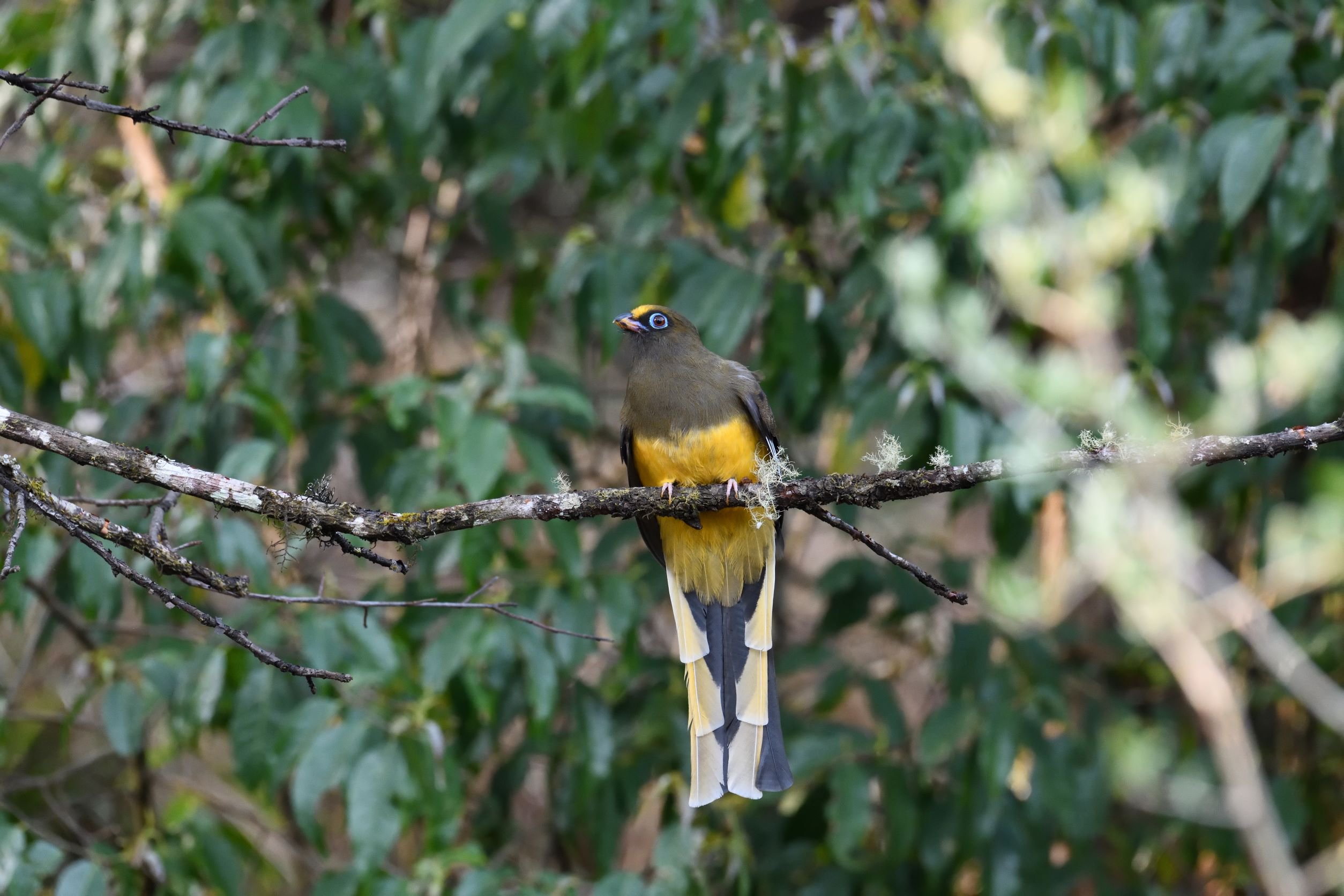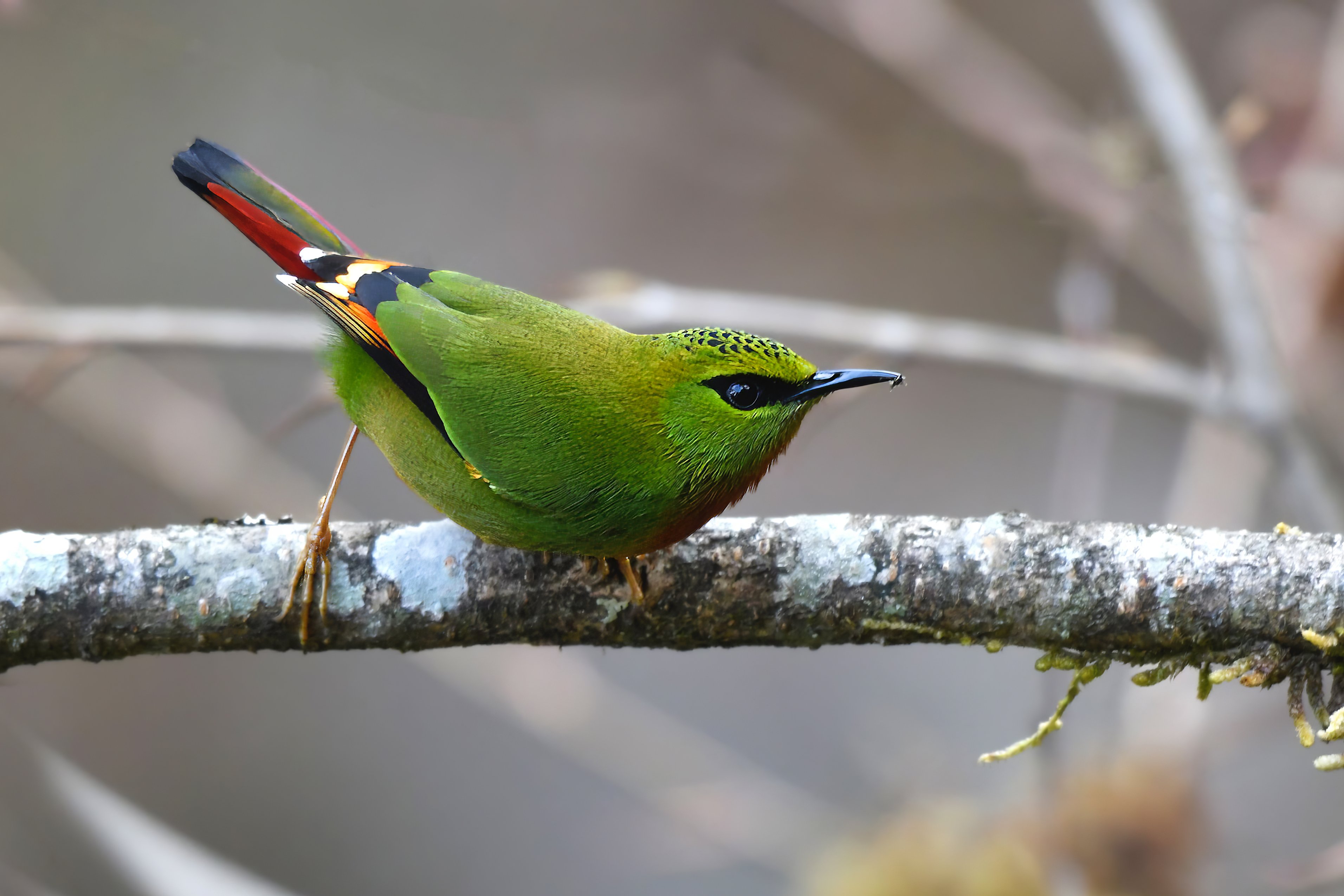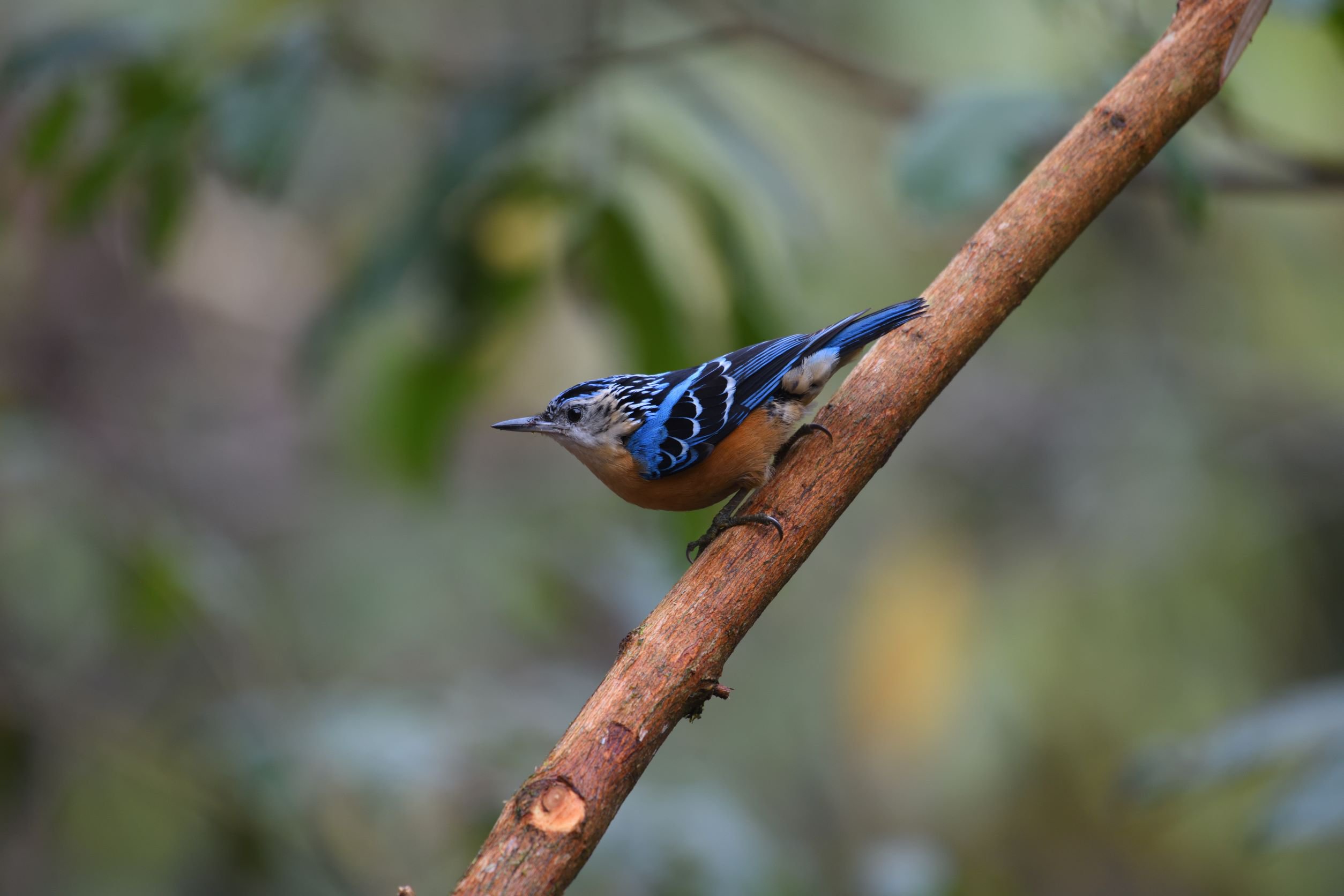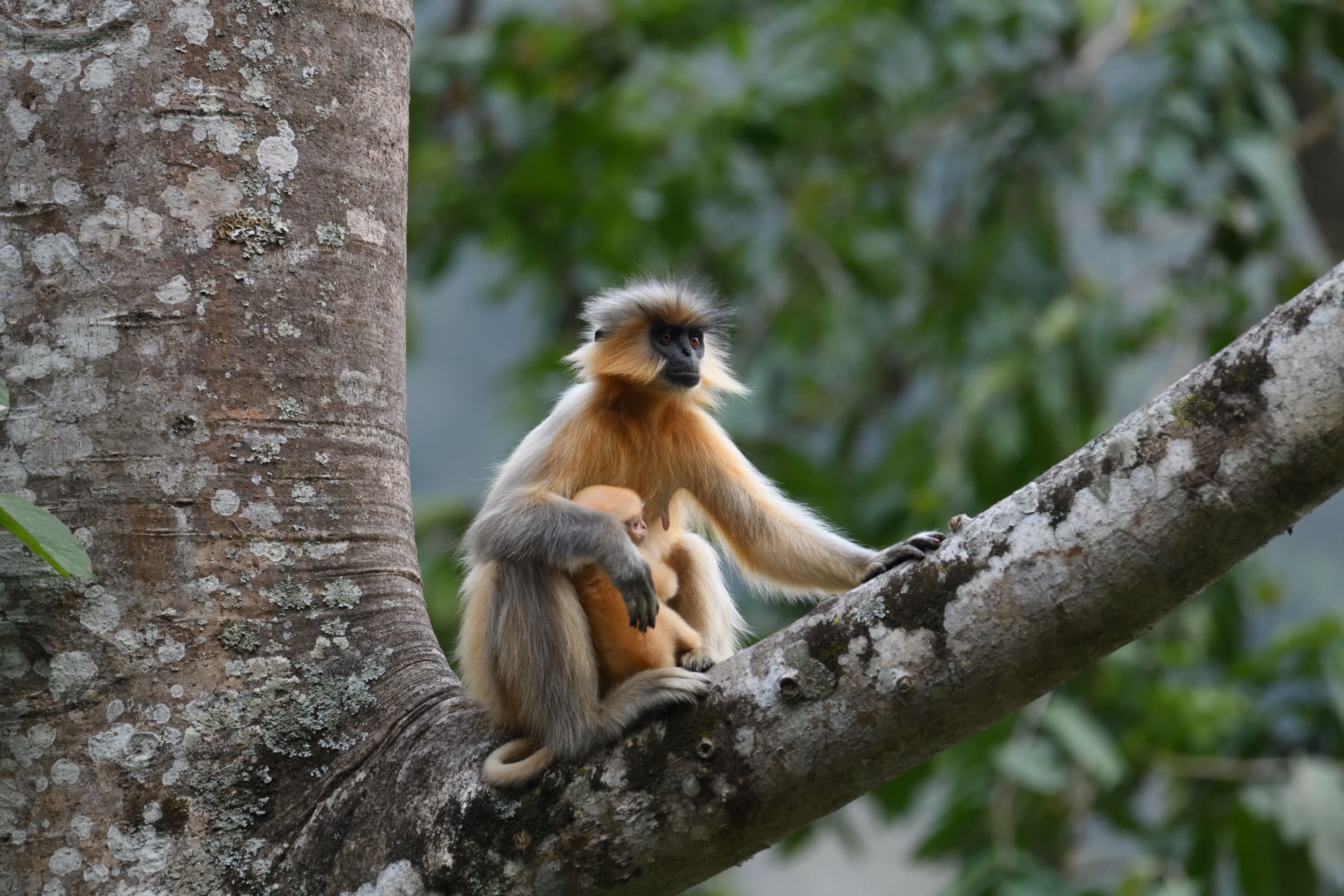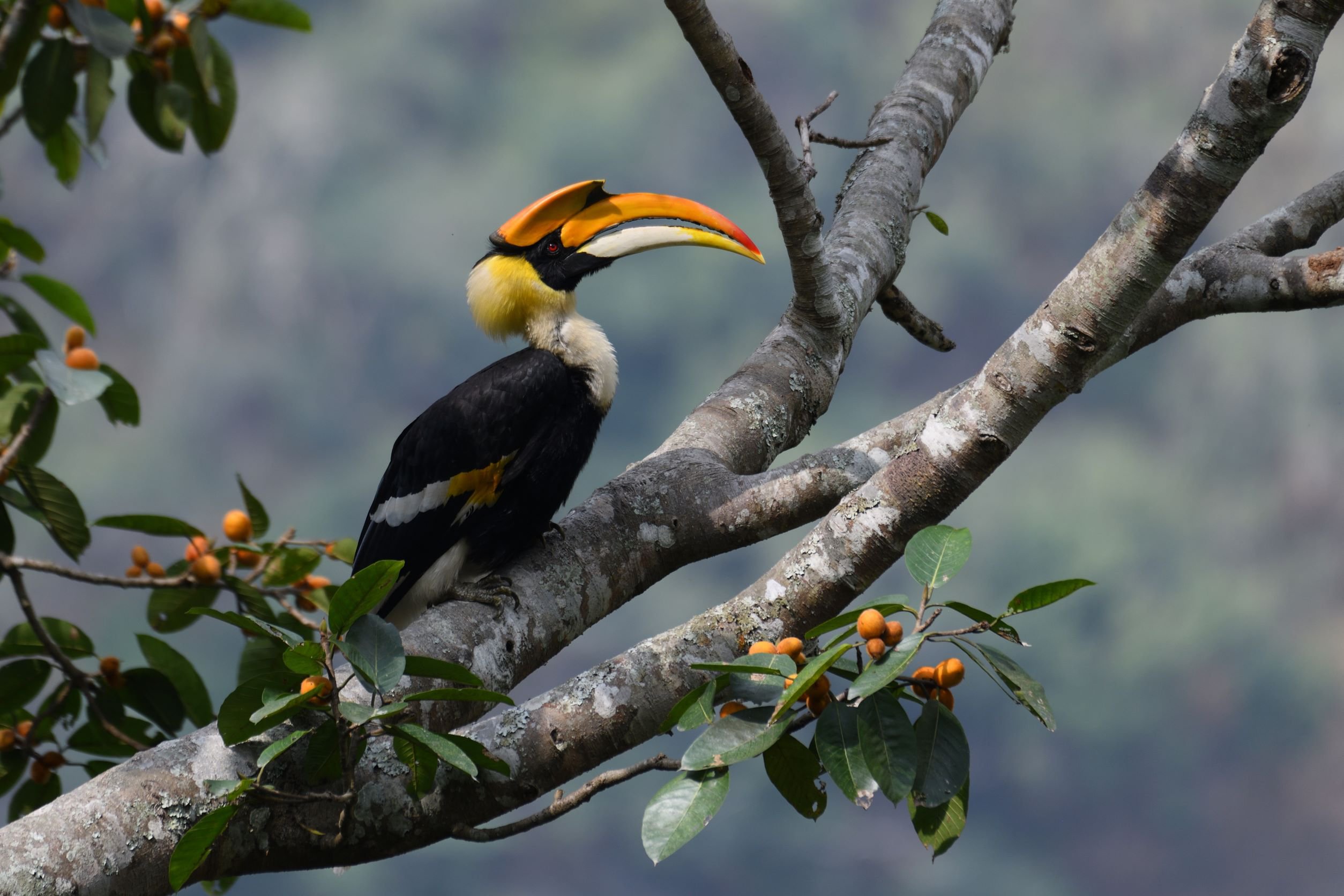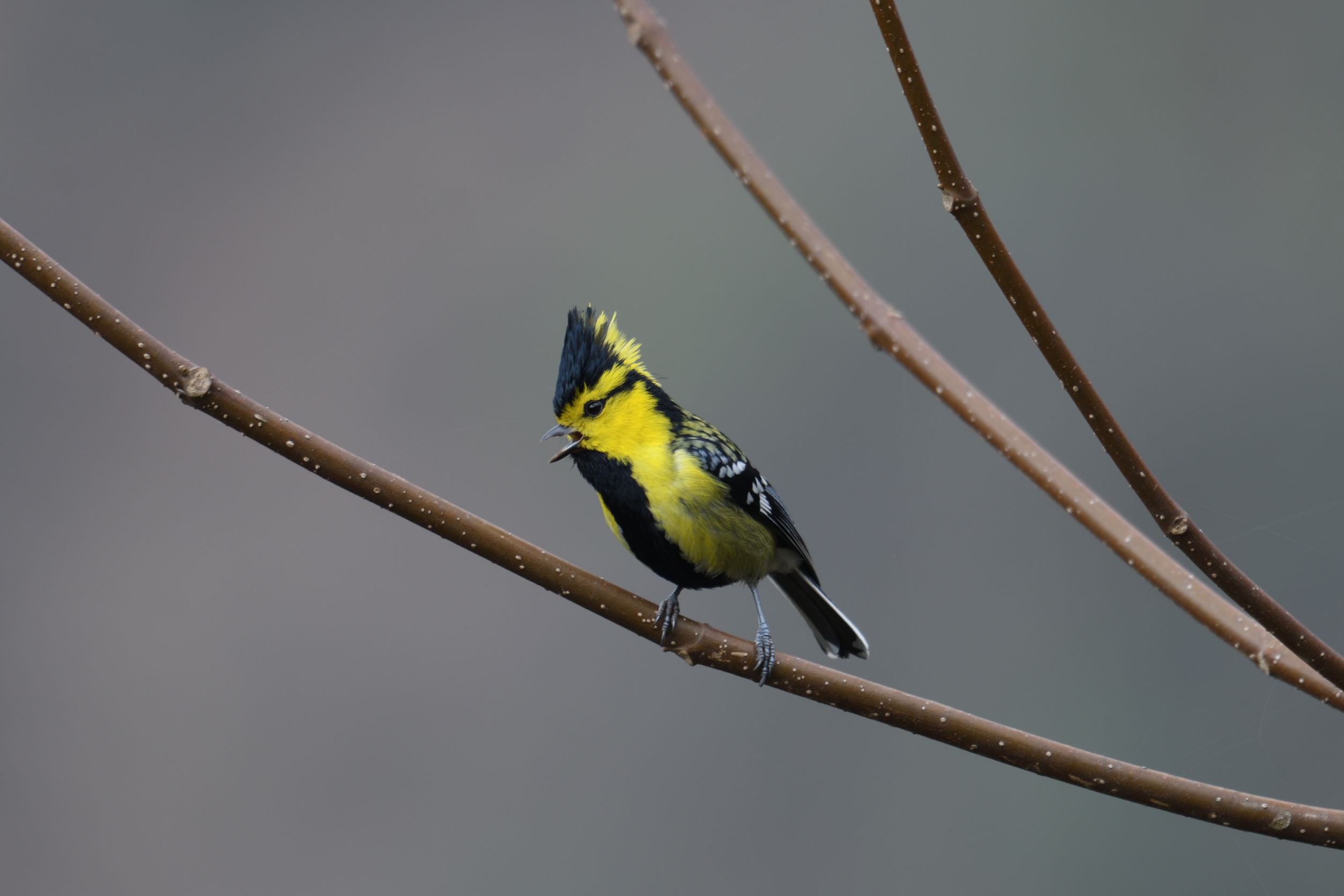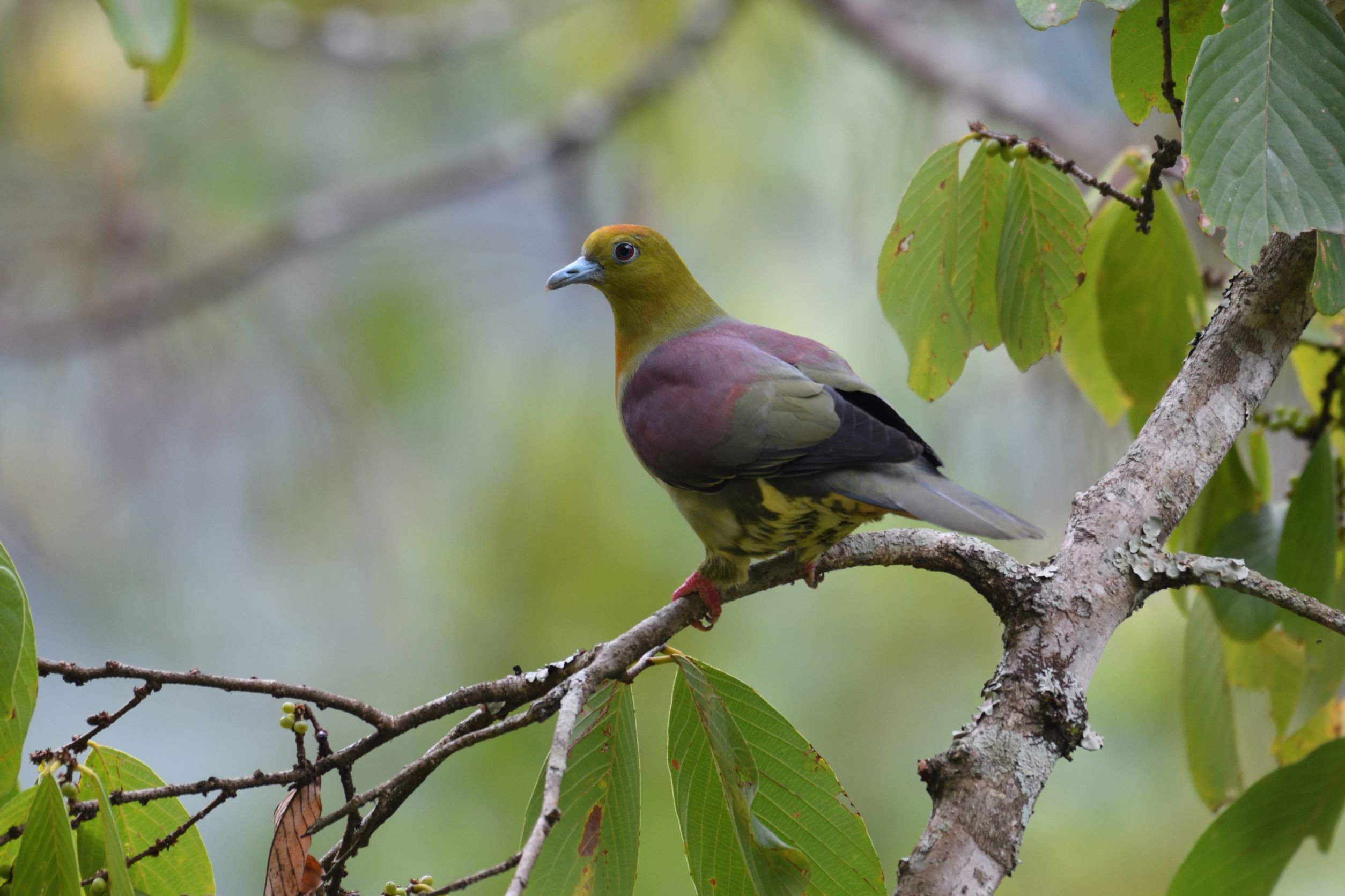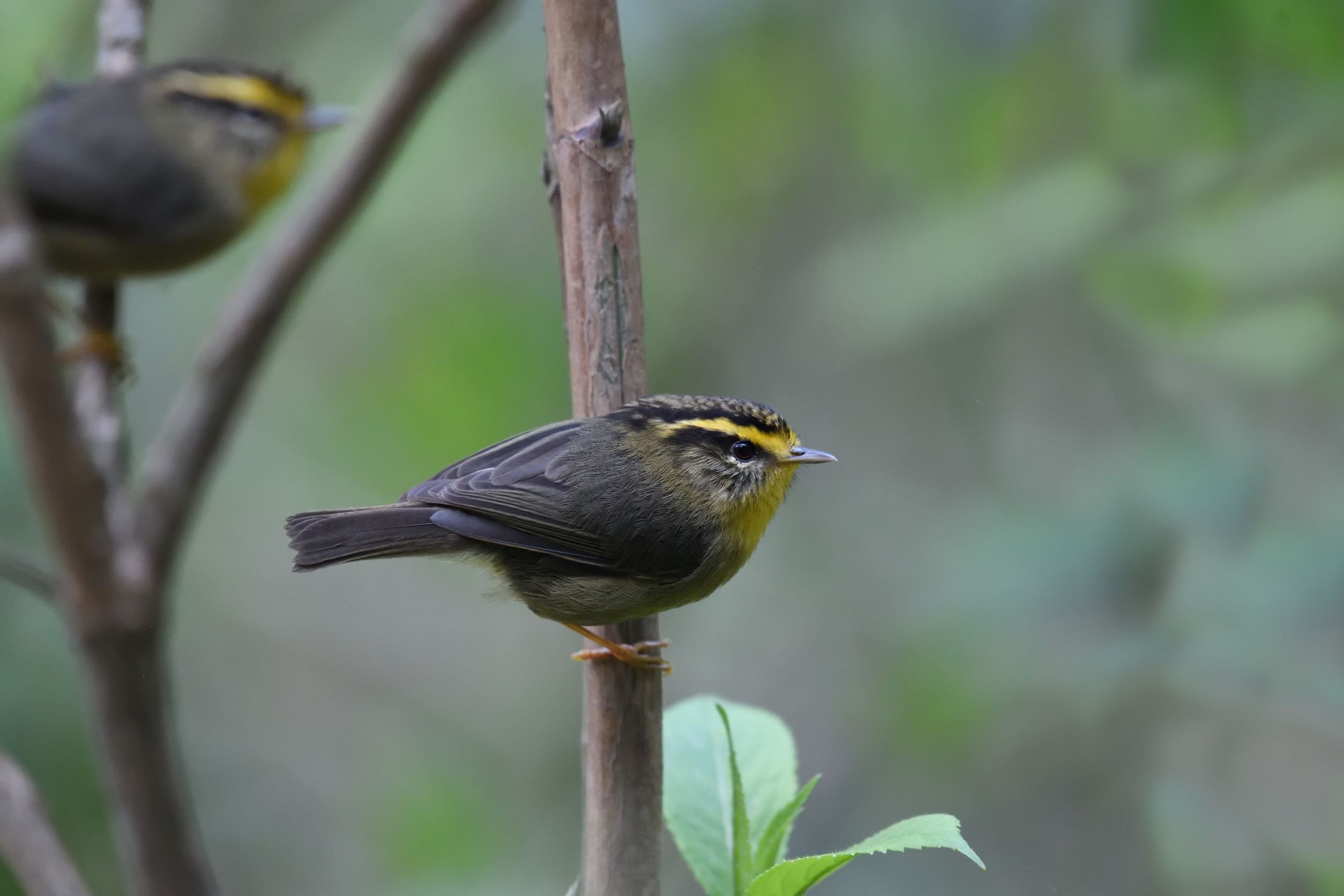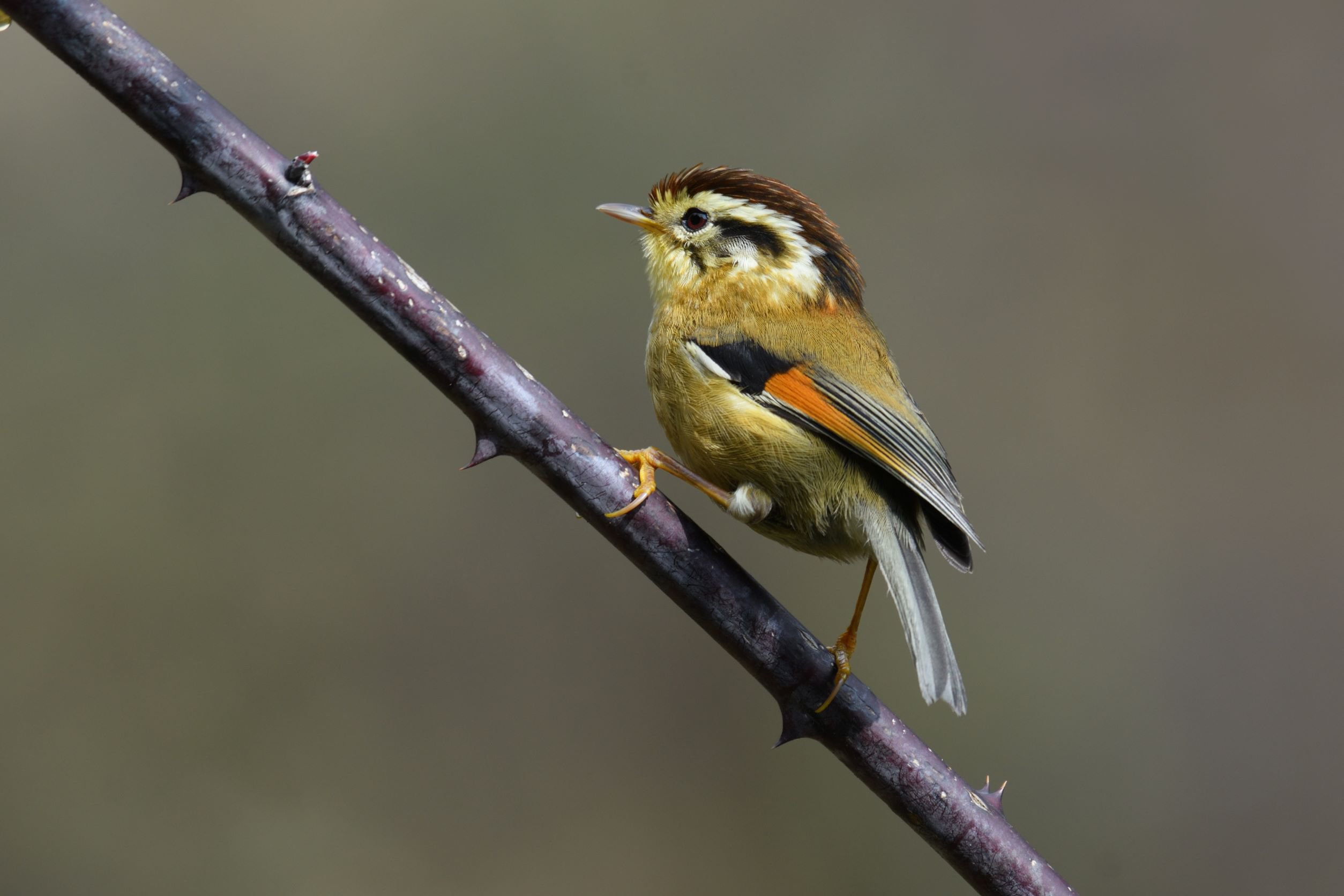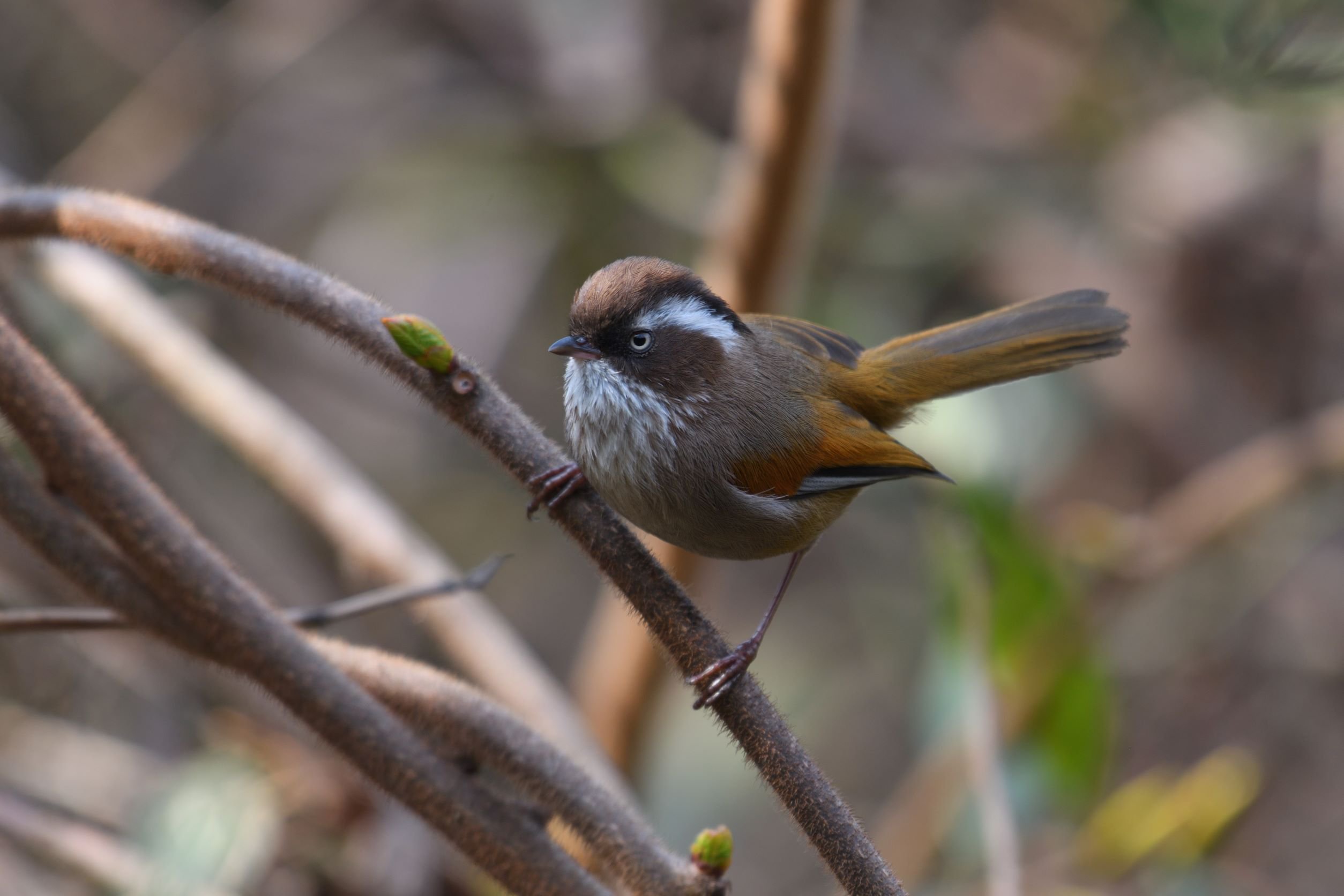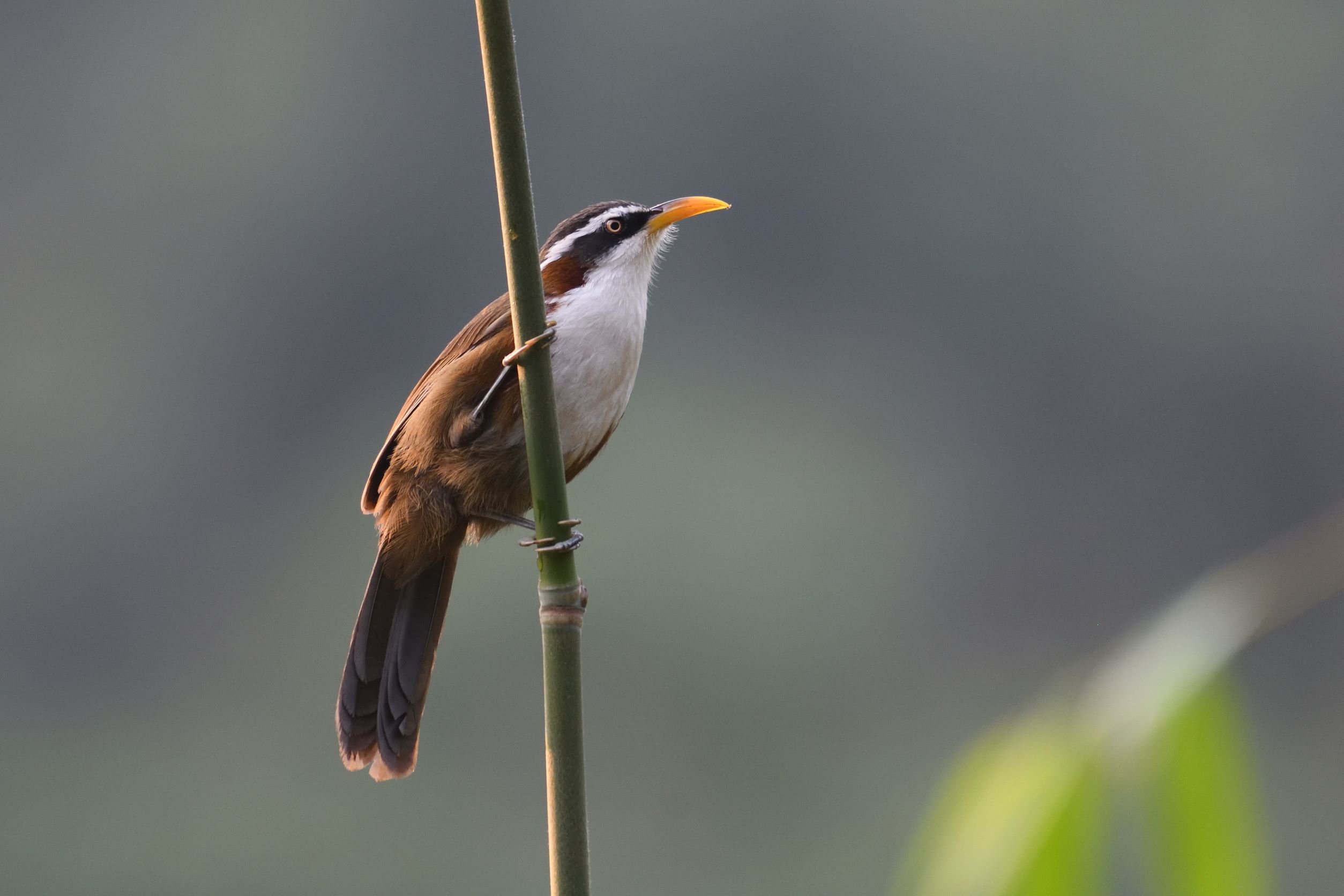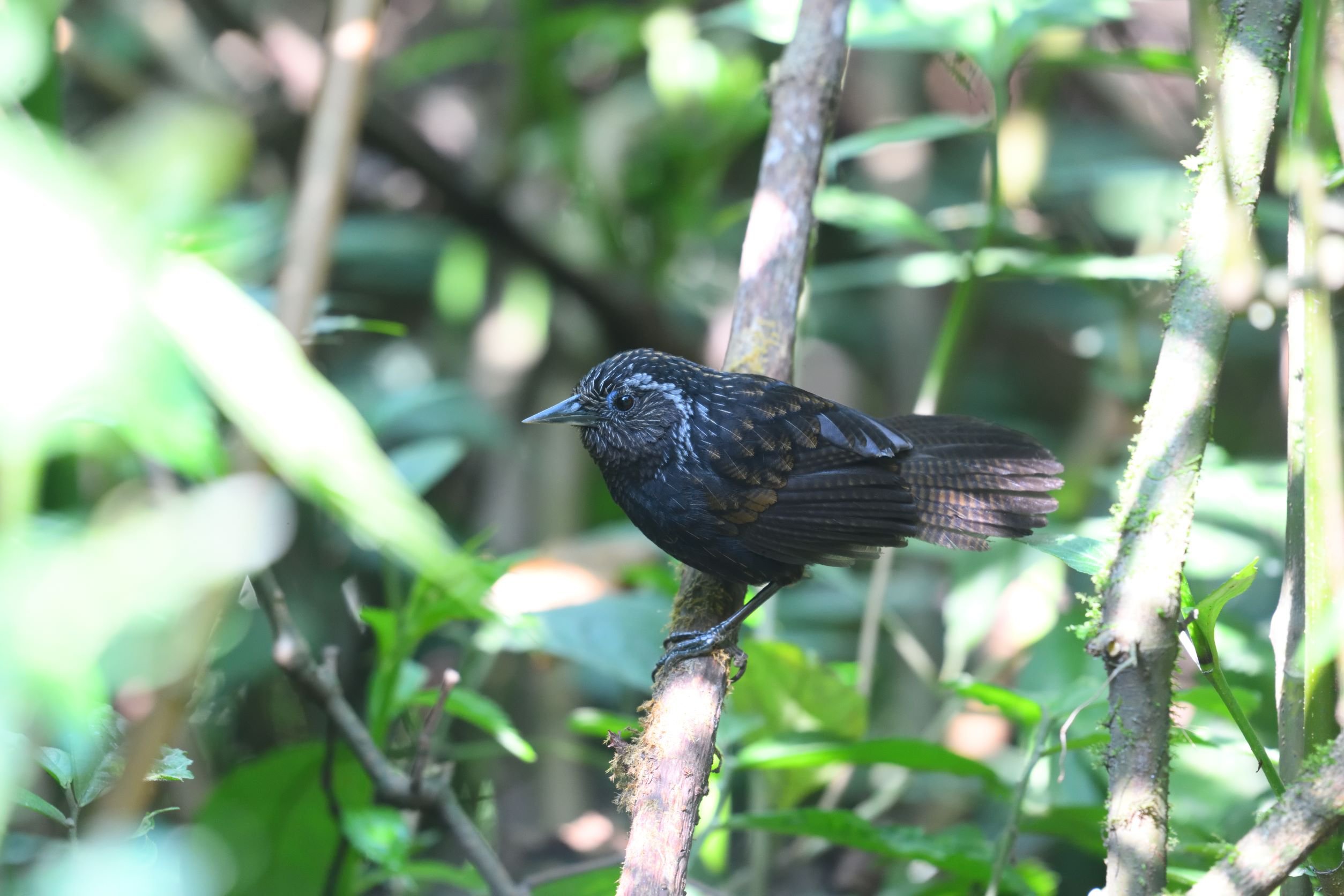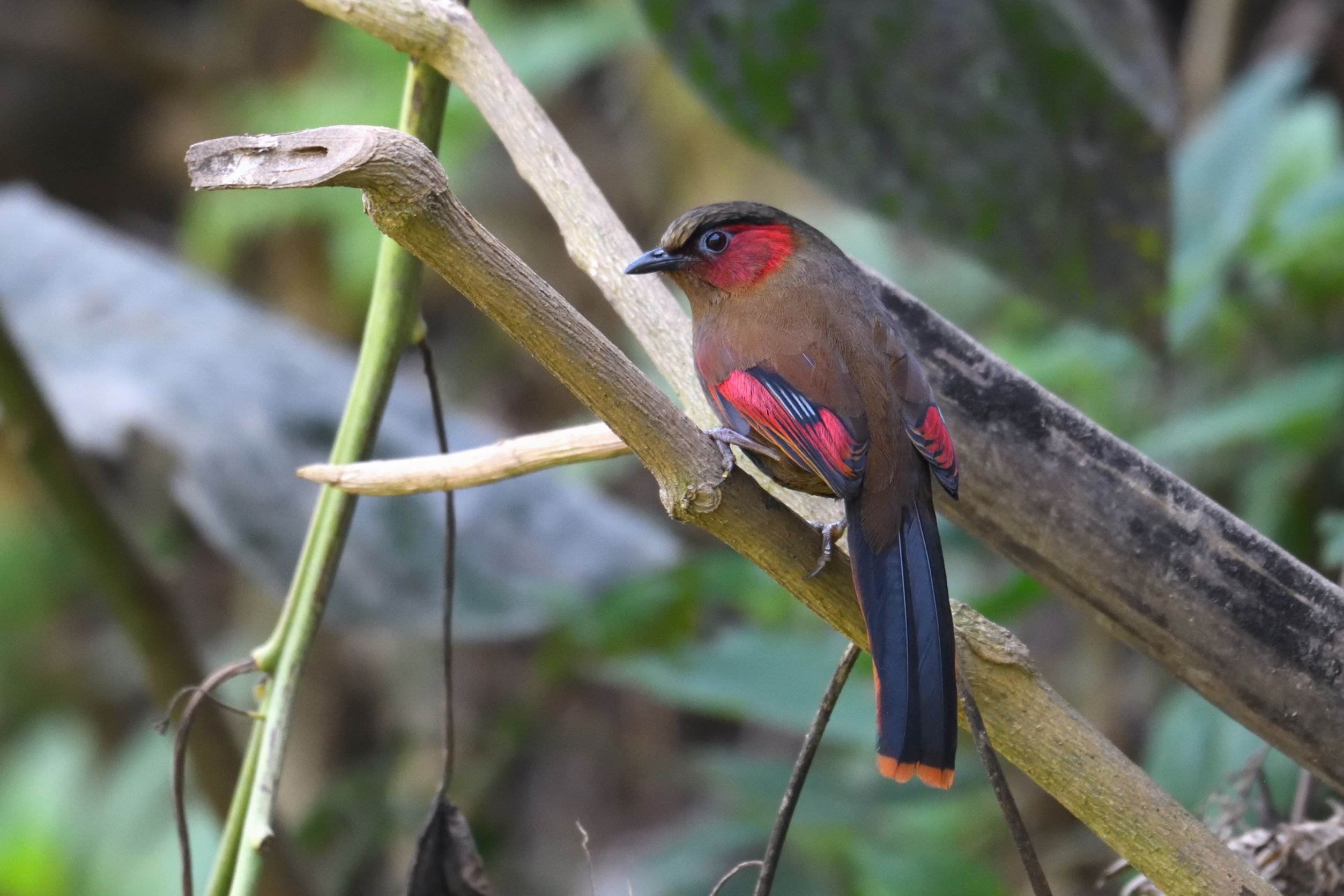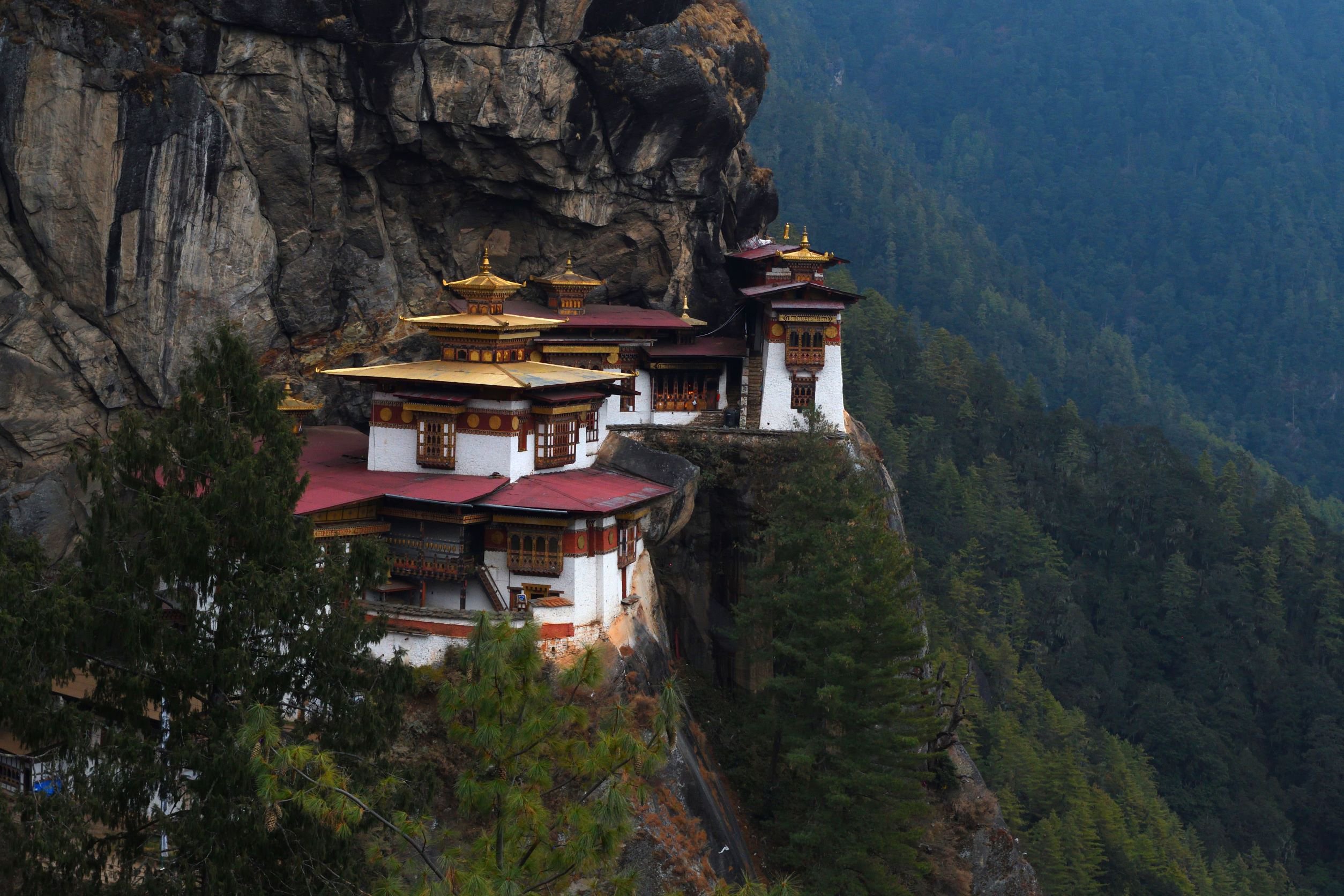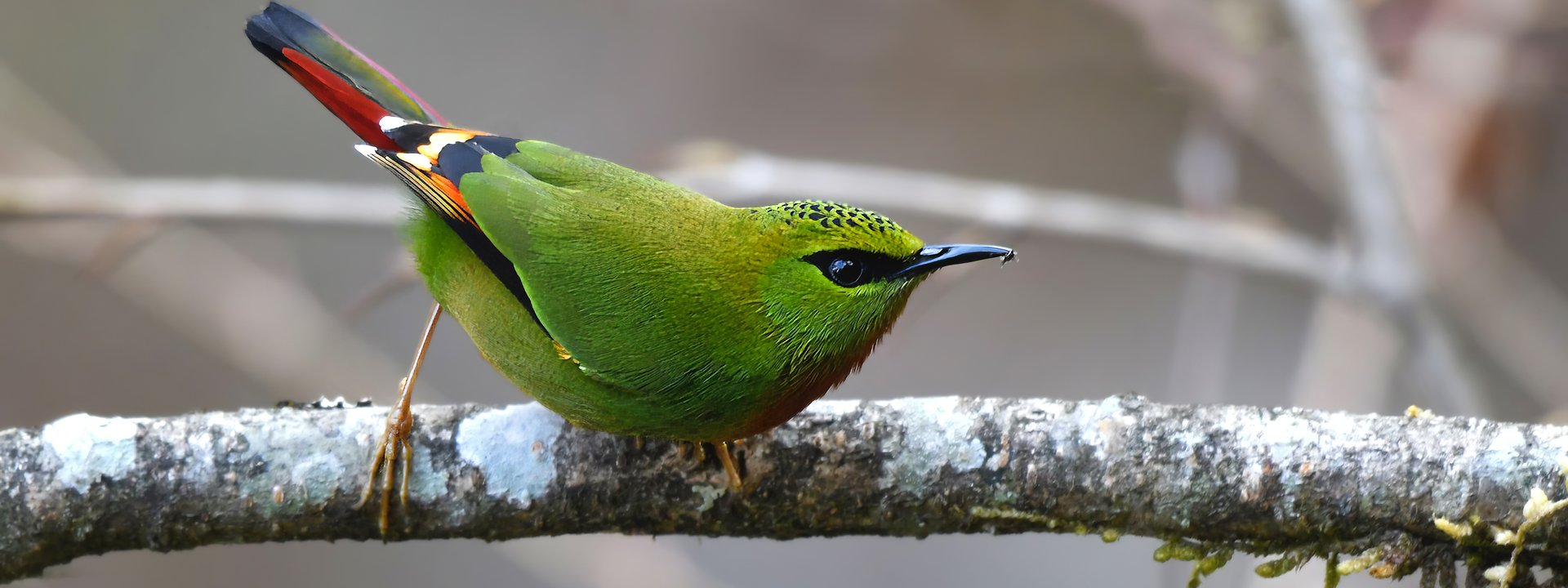Bhutan
Birding in Himalayan Paradise
A two-week birding, wildlife and cultural experience in the rarely visited Kingdom of Bhutan
The Himalayan Kingdom of Bhutan (or Druk yul) is home to the ‘Dragon People’ and is referred to by them as the ‘Land of the Thunder Dragon’. It remains largely unspoilt by the pressures of modern society; nowadays it is known as being one of the best-preserved environments in an increasingly developed world and should be on every birder’s list of places to go!
It has majestic, snow-capped peaks to the north and rich forests to the south, incised by fast-flowing and crystal-clear rivers. The valleys are adorned with traditional villages and its hilltops with monasteries or fortresses.
Within this beautifully preserved landscape the birdlife and wildlife is simply wonderful and our exciting new Limosa tour goes in search of delights such as Himalayan Monal, Ward’s Trogon, Fire-tailed Myzornis and Ibisbill. Join us for a never-to-be-forgotten personal journey.
Tour Dates & Prices
Tour Highlights
- Incredible birdwatching trip to Bhutan
- 11 nights in Bhutan, from Yongkola west to Paro
- Satyr Tragopan, Himalayan Monal, Blood Pheasant, Himalayan Cutia, Ibisbill plus Ward’s Trogon and Rufous-necked Hornbill
- Visiting sites for some of the best birding in all of Asia
- Incredible landscapes unspoilt by the pressures of modern society
- Valleys adorned with traditional villages and traditional Buddhist monasteries
- Expertly led by Limosa’s Colin Bushell and local guides
Outline Itinerary
Depart UK for Bangkok
Arrive Bangkok. Night in Bangkok.
Flight to Paro. Arrive Paro and birding alongside the Paro Chhu (river)
Birding at Chele La (3,988m) for some of Bhutan’s high-altitude species
Wangdue to Bumthang stopping for birds at Nobding, Pele la pass and Trongsa valley
Bumthang to Yongkola exploring along one the best birding routes in Bhutan and the Eastern Himalayas
Two full days to explore Thrumshing La National Park which is considered one of the top birding locations in Bhutan
Yongkola to Bumthang with birding at Namling, Sengor, Thrumshing La and Ura valley
Bumthang to Trongsa via Tharpaling Monastery for Himalayan Monals at close range
Trongsa to Punakha. Birding at Bje Zam, Chendibji, Pele La, Nobding and Puna Tshang Chhu valley
Birding at Jigme Dorji National Park, and in the afternoon a visit to Punakha Dzong
Visit Punakha Dzong and continue to Paro with stops along Puna Tshang Chhu valley, Menchuna Farm Road and Lampelri Botanical Park
Depart Bhutan for Bangkok. Evening flight to UK
Arrive UK
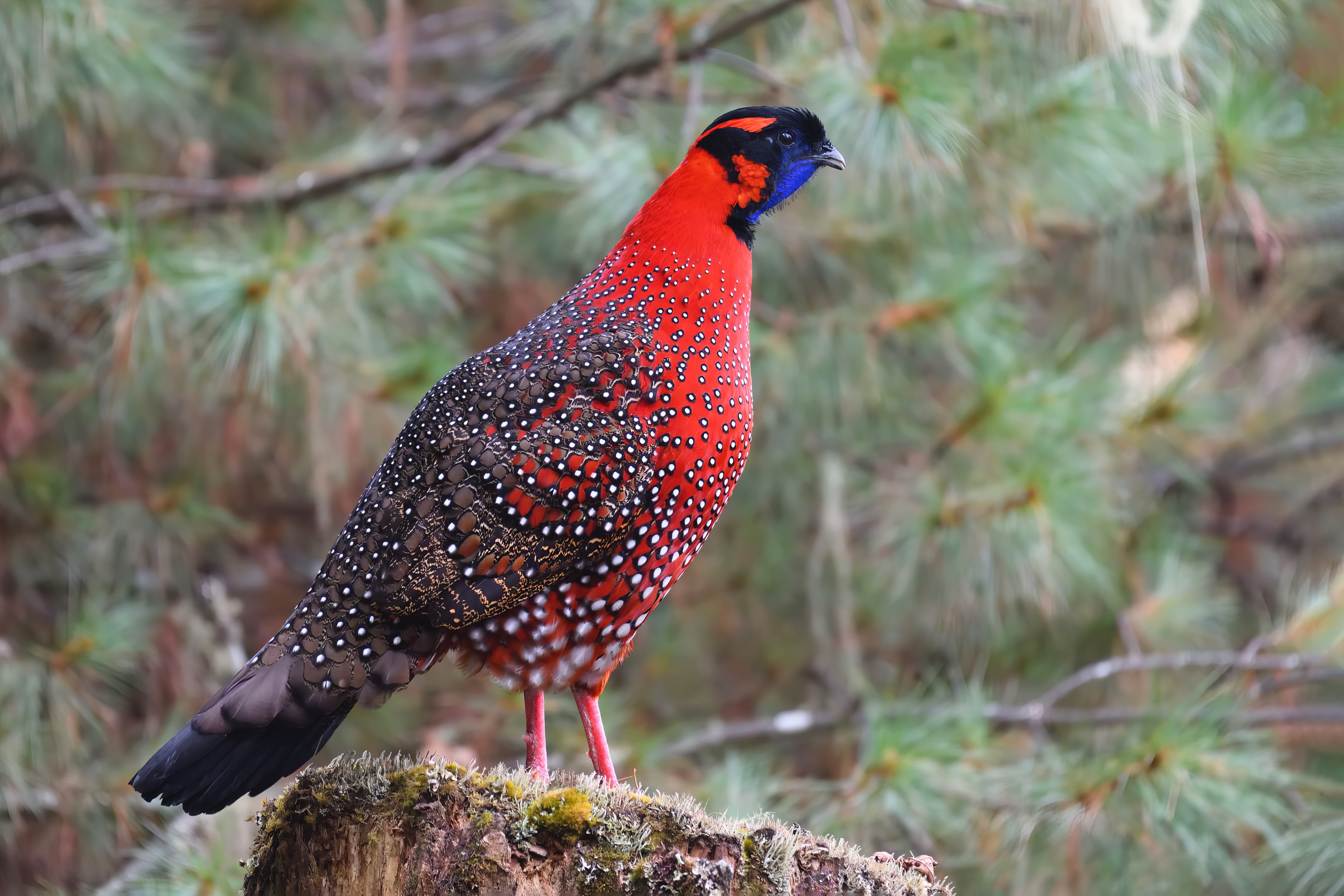
The Himalayan Kingdom of Bhutan (or Druk yul) is home to the ‘Dragon People’ and is referred to by them as the ‘Land of the Thunder Dragon’. It remains largely unspoilt by the pressures of modern society; nowadays it is known as being one of the best-preserved environments in an increasingly developed World and should be on every birder’s list of places to go! It has majestic, snow-capped peaks to the north and rich forests to the south, incised by fast-flowing and crystal-clear rivers. The valleys are adorned with traditional villages and its hilltops with monasteries or fortresses.
Within this beautifully preserved landscape the birdlife and wildlife is simply wonderful and our exciting new Limosa tour goes in search of delights such as Himalayan Monal, Ward’s Trogon, Fire-tailed Myzornis and Ibisbill. Join us for a never-to-be-forgotten personal journey.
Paro is our gateway to the mighty Kingdom of Bhutan and after a day birding here, we will explore rich valleys, mountain passes and mix of habitats at varying altitudes. We have chances for more than 300 bird species including pheasants, laughingthrushes, warblers, fulvettas, yuhinas and sibias, with the fascinating backdrop of the landscape, people and culture of Bhutan.
Our first afternoon at Paro will give us our first chance to find the sought-after and unique Ibisbill along the boulder-strewn Pa Chhu (river), as well as Plumbeous Water Redstart, Russet Sparrow and Rufous-breasted Accentor.
The next day, we will make an early morning departure for the high pass at Chele La (3,780m) passing through ancient high boreal forests. This will be one of the highest points on our tour and if conditions are clear, we will have breath-taking views of the high Himalayan peaks of Jhomolhari (7,219m), Jichu Drake (6,989m) and down into the Paro and Ha valleys.
This will be the first of several opportunities to look for two extraordinary and highly colourful pheasants, Himalayan Monal and Blood Pheasant and other possibilities include Himalayan Cuckoo, Rufous-fronted Tit, Red-tailed Minla, Dusky Thrush, Blanford’s Rosefinch, Collared Grosbeak, White-throated Redstart, White-browed Bush Robin and Plain Mountain Finch.
Our itinerary has been organised to give us opportunities to look for many of Bhutan’s special birds and possible highlights could include Chestnut-breasted Partridge and Rufous-necked Hornbill in Thrumsing La National Park or watching monks feed wild Himalayan Monals at Tharpaling Monastery. Another and equally stunning pheasant we will look for is Satyr Tragopan and there will also be opportunities to search for the localised and brightly coloured Ward’s Trogon.
Spring brings almost perfect weather to Bhutan and this is undoubtedly the best time to visit. Clouds can sometimes hang low in the valleys, but this will be more than compensated for by the superb array of birds and wildflowers. The wonderful pinks of the rhododendrons and wild azaleas form flowering carpets, whilst flowering meadows are truly wonderful.
Our new 2023 tour has been designed especially for us by highly regarded Bhutanese guide Chubzang Tangbi and will be accompanied by Limosa’s East Asia specialist Colin Bushell. We plan to stay in comfortable hotels throughout our stay, without the need for camping!
In a country with a strong Buddhist belief in the balance of nature and well-being, where the philosophy is Gross National Happiness, we believe that our comprehensive itinerary is a perfect balance of birdlife, wildlife, landscape and culture that will improve your own personal happiness!
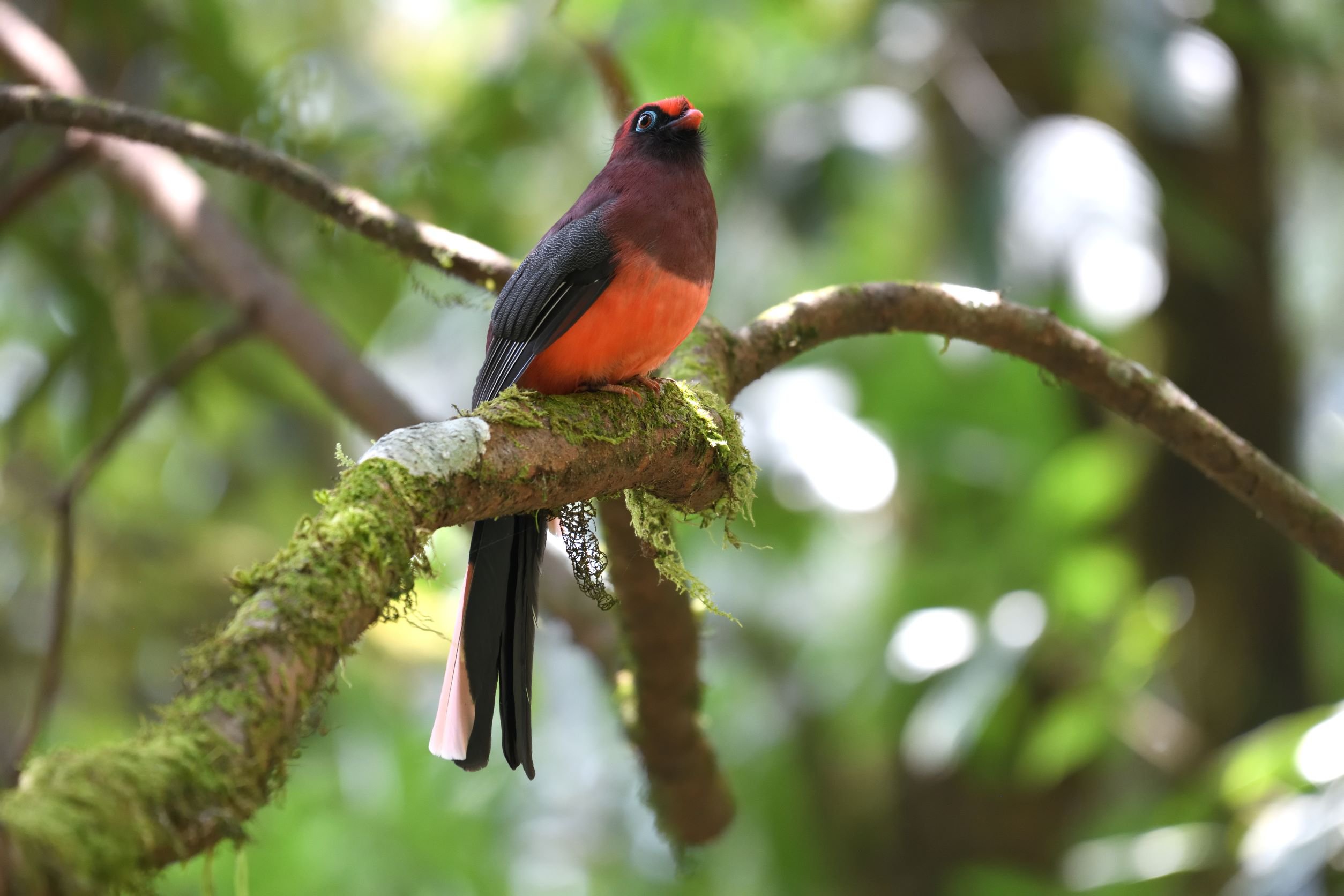
Day 1
Depart UK for Bangkok.
Day 2:
Arrive Bangkok. Night in Bangkok.
Day 3
Arrive Paro, Bhutan
On our Drukair/Bhutan Airlines flight to Paro, we should have good views of the Himalayas, including many of the highest mountains in the world. After clearing customs and immigration, we shall be be met by our guide.
Next we will stop by the Pa Chhu river, where camouflaged amongst the glacial stones, Himalayan riverine species such as the Ibisbill can be seen as it dips in the snowmelt, searching for food. In this area we should also find; the fairly common Brown Dipper, Common Hoopoe, Himalayan Buzzard, Common Kestrel, Grey-backed Shrike, Plumbeous Water Redstart, Russet Sparrow, Rosy Pipit, and Rufous-breasted Accentor.
Northward migration will be underway and many of the valleys throughout Bhutan act as important conduits, therefore, it is possible that you may see species as yet not recorded in Bhutan Night Paro
Day 4
Chele La
We rise early for a drive up to Chele La, a pass that rises to 3,800m to the west of Paro. As the sun starts to rise and the light improves, we will enjoy views of the ancient high boreal forests and, if conditions are clear, have breathtaking views of the high Himalayan peaks of Jhomolhari (7,219m) and Jichu Drake (6,989m).
As we climb to the top of the pass, we will keep our eyes open for a shimmering male Himalayan Monal and other roadside birds could include the handsome White-collared Blackbird.
From the top of the pass, we will gradually make our way back to Paro for a second night exploring as we travel. There should be plenty to look for with the possibilities including Himalayan Cuckoo, Rufous-fronted Tit, Greenish Warbler, Red-tailed Minla, Hodgson’s Treecreeper, Black-throated and Dusky Thrushes, Blanford’s Rosefinch, Collared Grosbeak, White-throated Redstart, White-browed Bush Robin and Plain Mountain Finch. Night Paro
Day 5
Wangdue to Bumthang
After a couple of busy days, we have a more relaxed day, with a somewhat later start and after breakfast, we drive to Bumthang stopping for birds at Nobding, Pele la pass and Trongsa valley.
Bumthang is the religious heartland of Bhutan and there are many ancient cultural and religious sites dating back well one thousand years.
As we drive along Selthang La (3,600m), we will hope for views of Mt. Gangkar Puensum which at 7,570m is the world’s highest unclimbed peak. All around are stunning landscapes of the High Himalayas, auspiciously placed prayer flags, typical Bhutanese villages and spectacular temples – this is truly a magical land!
Species we could encounter along the way include the brilliant Spotted Laughingthrush, Rusty-flanked Treecreeper, Long-tailed Minivet, Chestnut-headed Tesia, Dark-rumped Rosefinch, Brown Bullfinch, the chunky White-winged Grosbeak, White-browed Fulvetta, Grey-crested and Rufous-vented Tit. Night Bumthang
Day 6
Bumthang to Yongkola. Exploring along the best birding routes in Bhutan and the Eastern Himalayas
Leaving Bumthang valley, we will drive up through forests of larch, silver fir, spruce and towering hemlocks to Thrumshing La (pass) at 3,780m, where we begin our exploration of this magnificent forested road. This can be a great spot to look for one of Bhutan’s most highly-prized birds, the spectacular Satyr Tragopan and if we are fortunate, we may get close lengthy views.
Blood Pheasant is also present here and the flocks which feed along the roadside could also include the rarely-seen Great Parrotbill, the amazing Slender-billed Scimitar Babbler and the uncommon Speckled Wood Pigeon.
From the pass, we drive down to the nomadic village of Sengor and continue to Yongkola, stopping for birds such as Yellow-billed Blue Magpie, Rufous-breasted Bush Robin, Rufous-vented Yuhina, Large-billed Leaf Warbler, the photogenic Chestnut-tailed Minla, Rufous Sibia, Grey-chinned Minivet, Grey-sided Bush Warbler and Hoary-throated Barwing. Three nights at Yongkola
Days 7-8
Thrumshing La National Park
This area is considered to have some of the finest birding in Asia and we have two days to explore the pristine forests of Thrumshing La National Park using a paved but rarely used road.
There are many sought after species to search for here including the handsome Chestnut-breasted Partridge and the magnificent Rufous-necked Hornbill. We will also be on the look out for Bay and Crimson-breasted Woodpeckers, Long-tailed Broadbill, Yellow-throated and Golden-breasted Fulvettas and the weird looking Sikkim Wedge-billed Babbler.
Amongst the other possibilities here are Himalayan Cutia, Spotted Elachura (formally known as Spotted Wren Babbler), Broad-billed and Chestnut-crowned Warblers, Black-headed Shrike-babbler, Black Bulbul, Scaly and the near endemic Bhutan Laughingthrush, Orange-bellied Leafbird and Yellow-bellied Fantail.
After birding in the upper region of Yongkola, we will then switch our attention to the wonderfully rich, warm broad-leafed forests of Lingmethang road. Here we hope to find more new species with the stunning but secretive Red-faced Liocichla being one of the possibilities. Other species we could see include Rufous-chinned Laughingthrush, Maroon Oriole, White-throated Fantail, Grey Treepie, Grey-bellied Tesia, Striated Prinia, Golden Babbler, Greater Rufous-headed Parrotbill, Striated Bulbul, Black-chinned Yuhina, Rufous-bellied Niltava, Orange-headed Thrush and Blue-capped Rock Thrush.
On one evening, we will offer an optional short night drive hoping to find Bhutan Giant Flying Squirrel as well as Hodgson’s Frogmouth, Brown Wood Owl and the tricky Mountain Scops Owl.
Day 9
Yongkola to Bumthang over Thrumshing La
After breakfast, we will continue our exploration of the Sengor valley, looking for special birds in the higher mid-temperate forests. There are several stunning birds we could see here including Fire-tailed Myzornis, Fire-tailed Sunbird (arguably the best-looking sunbird in the world) and the rare Satyr Tragopan.
From Sengor, we will drive back up through the high pass at Thrumshing La (3,780m), stopping enroute to look for the scarce Fulvous Parrotbill, as well as Black-throated Thrush and Stripe-throated Yuhina.
We will then descend through dense conifer forests which provides us with further opportunities for both Himalayan Monal and Blood Pheasant, as well as Himalayan Bluetail, Whistler’s Warbler, Spotted Nutcracker, White-collared Blackbird, Green-tailed and Gould’s Sunbirds and, if we are very fortunate, perhaps the rarely seen Chestnut Thrush or Robin Accentor.
The final part of journey today takes us through the picturesque village of Ura and we descend to Bumthang valley where we overnight. Night Bumthang
Day 10
Bumthang to Trongsa via Tharpaling Monastery
We need to make an early start to arrive on schedule at Tharpaling Monastery where we hope to witness the monks feeding Himalayan Monals, as the birds have become accustomed to this practice.
Other species we will look in the area include Snow Pigeon, Black-faced Laughingthrush, White-bellied Redstart, Himalayan Beautiful Rosefinch and, with a bit of luck, we could see Godlewski’s Bunting.
After breakfast, we will descend to the Gattsa valley and continue to Yotong La (3,450m) for some high-altitude birds such as Red-throated Thrush, Ultramarine Flycatcher, Red-headed Bullfinch, Hume’s Bush Warbler, Tickell’s Leaf Warbler, Rufous-winged Fulvetta, Himalayan White-browed Rosefinch, White-winged Grosbeak and Whiskered Yuhina.
Arriving in Trongsa, we may have the option to visit the historic Trongsa Dzong (fortress) built in 1637 and the Ta Dzong or Watch Tower, which is now the National Museum. Night Trongsa
Day 11
Trongsa to Punakha over Pele La
Another early start as we drive to Bje Zam for our first birding stop of the day. Birds we hope to find here could include Black-tailed Crake, Greater Yellownape and the stunning Large Niltava.
On nearby roadside streams, we will hope to find White-capped Water Redstart with Striated Laughingthrush and Fire-breasted Flowerpecker also possible.
The road takes us on through the village of Chendibji, where a Nepalese styled Chorten (Buddhist shrine) is picturesquely situated alongside the river. Here, our top target is the appropriately named Crested Kingfisher and if we are fortunate, we may also locate a Solitary Snipe.
Passing over Pele La, where both Himalayan Griffon Vulture and Lammergeier are both possible, we will descend to Nobding where we have an opportunity to locate another of Bhutan’s top target birds, the exquisite Ward’s Trogon. This montane species is classified as near threatened and is restricted to the Eastern Himalayas.
With Rufous-bellied Woodpecker, Long-billed Thrush, Chestnut-crowned Laughingthrush, dazzling Scarlet Minivets, as well as Yellow-cheeked Tit and Small Niltava all possible, it promises to be a great morning!
Continuing on to the warmer valley of Punakha, we plan to stop along the Puna Tshang Chhu (river) to look for various water birds including the endangered Pallas’s Fish Eagle. There could also be some familiar ducks such as Gadwall, Eurasian Wigeon, Mallard but mixed in with these we will hope to find Indian Spot-billed Duck. We will then drive to Punakha where we spend the night. Two nights at Punakha
Day 12
Birding Jigme Dorji National Park
We will rise early to get to Rimchhu valley to enter the Jigme Dorji National Park for the morning birding. The forest is pristine at an elevation of 1,300m where we should encounter; Red-headed Trogon; Greater Yellownape; Red-vented, Striated, Black and Mountain bulbuls; Orange-bellied Leafbird; Large and Small niltavas; Little and Slaty-backed forktails; Elachura; Nepal Fulvetta; Rufous-capped Babbler; Blue-winged Minla; Whiskered Yuhina; Slaty-bellied Tesia; Ashy and Hair-crested drongos; Tibetan Siskin; Spot-winged Grosbeak; Speckled Piculet; Rufous Woodpecker; Pallas's Fish-eagle; Great Black-headed Gull; Crested Kingfisher and Scaly-breasted Munia.
Towards mid-day when birding lessens, we will return to Punakha and spend time exploring the dzong where we will get a glimpse of Bhutanese religion and culture. Inside the dzong there are many detailed frescos and magnificent carvings showing the creative skills of our artists and just two of our thirteen traditional arts. It is seen to its best in the afternoon sunshine, when the richness of the paintings can be fully appreciated. Perhaps the most spectacular building is the Kuenrey or Assembly Hall with its huge statues of Buddha, Guru Rinpoche and the Zhabdrung under a truly spectacular ceiling featuring hundreds of painted dragons. Punthang Dechen Phodrang (Punakha Dzong) is an impressive dzong that sits comfortably in its superb setting and as the translation states, is a Palace of Great Bliss.
Day 13
Punakha to Paro over Dochu La
This morning we will take a cultural break to visit the majestic Punakha Dzong which was built in 1637 and is situated on a promontory at the confluence of the Mo (mother) and Pho (father) Chhu (rivers).
Punakha Dzong is known as the “Palace of Great Happiness” and considered to be one of the most beautiful monastery-fortresses in Bhutan.
Continuing our journey through the terraced fields at Lobesa, we reach the mixed broad-leafed forest of Menchuna where we will take a short off-road trail.
This area can be productive for various species we may not have seen so far and the possibilities include Black Eagle, Speckled Wood and Wedge-tailed Green Pigeons, Rufous-bellied Woodpecker, Streak-breasted Scimitar Babbler, Barred Cuckoo Dove, Rufous-capped and Chestnut-crowned Warblers, plus Golden Babbler and theh elusive Grey-sided Laughingthrush.
Our next stop is at Dochu La where colourful prayer flags and 108 glistening white chortens welcome us. Once again, on clear days there are magnificent views across the high Himalayan Mountains. Night Paro
Day 14
Depart Bhutan for UK via Bangkok
With our trip drawing to a close, we will head to the airport and begin our journey back to the UK.
Day 15
Arrive UK.
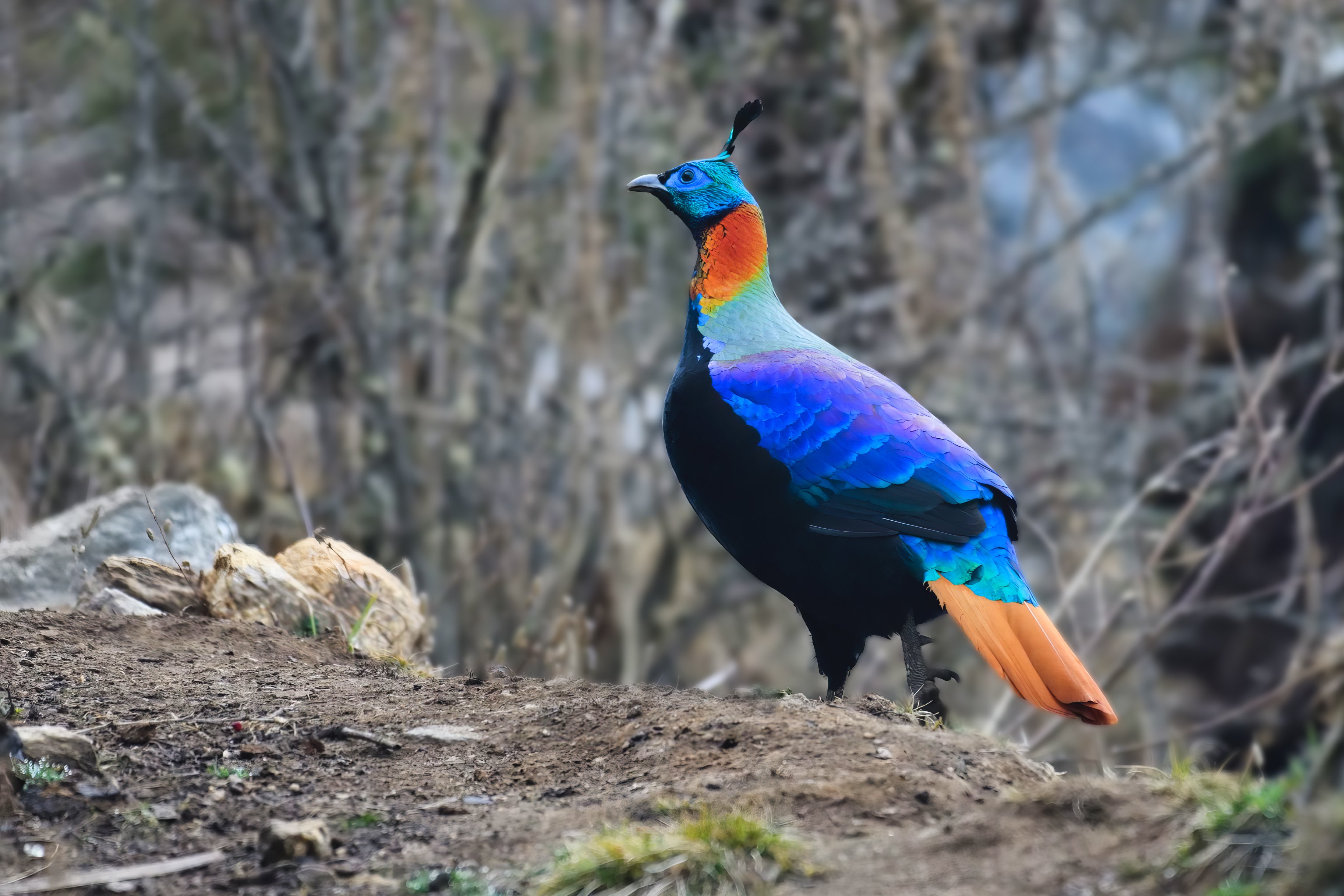
What to expect
A small group birdwatching tour to Bhutan with 11 nights in Bhutan.
We fly east to Bumthang from Paro and then gradually make our way back to Paro. Our journey will involving crossing a number of passes, the highest of which has an elevation approaching 4,000m.
Early starts are the norm for birding tours in tropical regions, where the daylight hours are relatively short (approx. 5:30am-6.30pm in Bhutan during late April/May) and it takes time for the sun to reach the valleys. Bird activity is at its peak early morning and late afternoon but at altitude it can sometimes stay busy throughout the day.
Overall, the tour is not strenuous but you should be prepared for early starts to enjoy the best of the morning’s birding. It will be important to be in the field at dawn so we can hear the birds singing and calling as the day begins. In some instances, this may be our only chance to discover if certain species are present, so we will naturally want to make the most of this opportunity.
On some days we do have longer transits, eg between Yongkola to Bumthang and Tingtibi to Tongsa. This will provide an opportunity to relax in the vehicle and take in the landscapes.
Spring brings almost perfect weather to Bhutan and this is undoubtedly the best time to visit. Clouds can sometimes hang low in the valleys, but this will be compensated for by the superb array of wildflowers. The pinks of the rhododendrons and wild azaleas form flowering carpets, whilst flowering meadows are wonderful.
Temperatures can vary greatly depending on local conditions and altitude. Expect it to be very cold on the high passes early in the morning and hats, gloves and fleeces are the norm. In the valleys, it will be cool spring-like temperatures, rarely reaching 30C and usually in the range of 18-20C.
Some rain is possible but usually not enough to impede birding and snowfall is possible at the high mountains passes.
Birds 300-330 species
Mammals 15-20 species
Accommodation
11-nights accommodation in Bhutan. All nights will be in medium to good hotels in comfortable and clean rooms with private facilities. We aim to use the best available in the area. There is no camping on our tour.
Meals
All main meals are included in the tour price with drinking water also provided.
We will have a catering team who will cook and serve some hot breakfasts and lunches ‘picnic style’ and these will be eaten in the field. Dinners are mostly buffets served at the hotels where we stay with continental, Indian and Bhutanese options usually available.
Walking
The walking is mostly easy to moderate. We will be doing short walks at altitudes of up to nearly 4,000m. Throughout our tour, the majority of our birding will be done along quiet roadsides and close to our vehicle. Wherever possible, we walk downhill. Some forest trails may have occasional steeper sections, but these are generally quite short.
Some participants may find it helpful to carry a lightweight collapsible stool.
Photography
This is a birding tour but photographers will have great opportunities to photograph birds throughout the tour.
Bhutan is a Buddhist country where killing is considered sinful, therefore, birds and mammals often appear to be tamer than in some other parts of the world, allowing you to take stunning photos.
There will, of course, also be some amazing opportunities for landscape and cultural photography.
Ground Transport
Air-conditioned minibus.
Flights
Despite the end of many pandemic restrictions, it is still proving extremely difficult to predict future flight prices and schedules. As a result, we have taken the decision to continue to price our holidays as excluding international flights.
To keep the process as simple as possible, we are working very closely with a dedicated agent at Travel Counsellors, Sacha Barbato, who is essentially now our “in house” flight consultant.
Sacha will be able to advise you which flights we are recommending for each holiday, and he will be able to book these for you.
This will also sometimes give you the option to travel from a regional airport if you prefer.

Tour Gallery
View a gallery of images for this tour below, click on an image to view as full size with caption
